Global Recycling Day 2021 – Be a Recycling Hero today!
- Home
- Residential
- Blog
- Archive by Category "Knowledge" (
- Page 7 )
[Post Date]
Global Recycling Day 2021 – Be a Recycling Hero today!
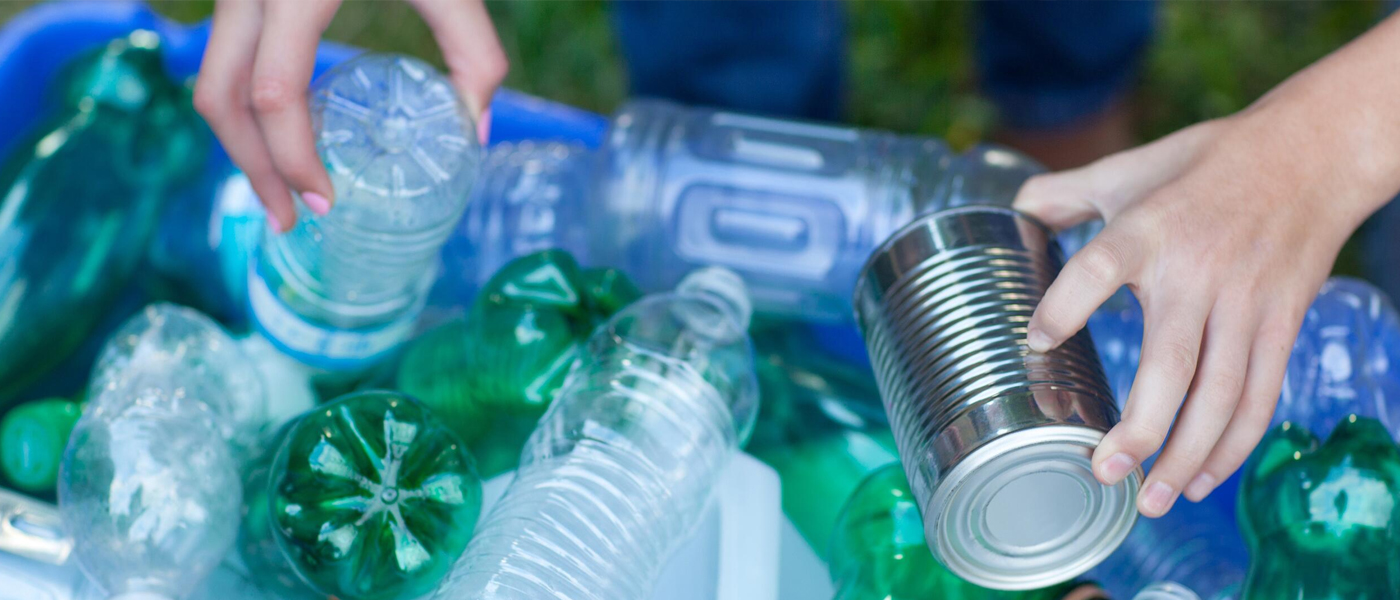
For most of us, we are familiar with the 3Rs of sustainability – Reduce, Reuse and Recycle. While we know that the first two can be easily implemented at home, the idea of the third one might be somewhat foreign to the majority. How much do we really know about recycling in Singapore and do we know what is the right way to recycle?
Global Recycling Day occurs on 18 March every year. The inception of it was with the intention of changing the mindsets of governments, businesses, communities, and individuals — encouraging the adoption of recycling to preserve precious primary resources and not generate more waste. It also aims to reinforce the importance of this issue at a global level and the need for it to be tackled to actualise big changes.
With that in mind, the theme for 2021’s Global Recycling Day is #RecyclingHeroes, where it will focus on celebrating the recycling efforts of people, places and activities all around the world. As Singapore charts forward with the SG Green Plan 2030, let’s find out how we can play a part in this movement too.
The Importance of Recycling
Many of world’s natural resources are finite and non-renewable. This means that once we run out of them, the world will no longer have these natural resources. As with the need to tap on the earth’s natural resources, it gives rise to more problems for our environment such as deforestation and pollution.
Recycling will help in extending the life of something that has been utilised for its initial intention and reduce the dependency on natural resources of our planet.
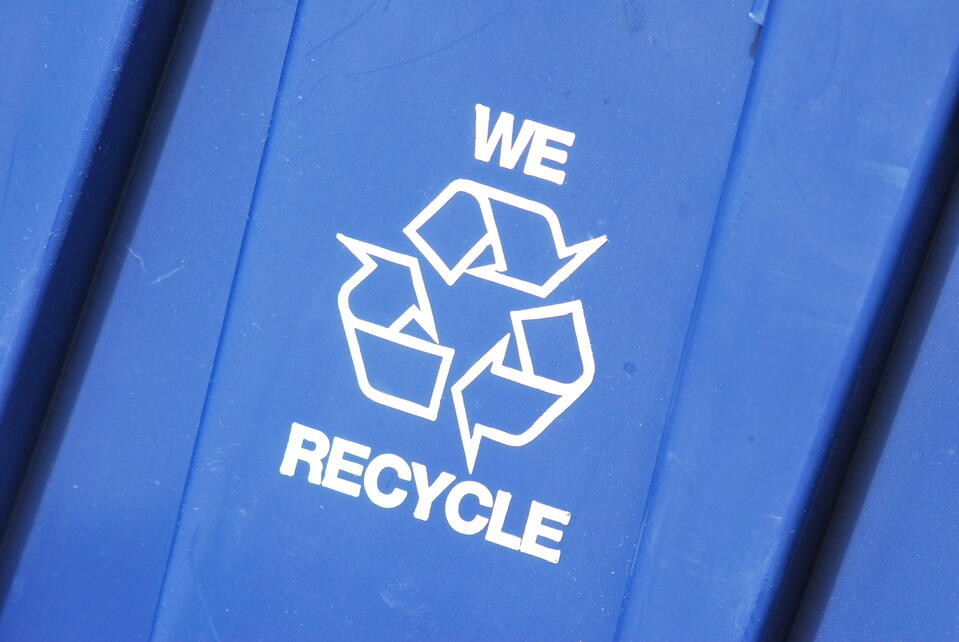
Therefore, it is important to learn how to recycle and the active role mankind plays in preserving our environment. Countries all around the world have rallied its citizens and implemented necessary measures to do good for the earth and encourage a culture of recycling.
- Germany
In Germany, the recycling process is very comprehensive and precise. There are various coloured bins for different types of waste. For example, blue bins for paper, yellow bins for recyclable goods and a different coloured bin for different coloured glass. There are even bins for compostable goods such as food scraps, and boxes for battery recycling in supermarkets. The system may be detailed, but most German citizens are well-informed on how to carry out the process. In fact, up to 56.1% their waste is recycled! [1] - Austria
When Global Recycling Day first launched in 2018, Austria hosted an exhibition to educate the public on the importance of recycling. Today, Austria has a blanket ban on several types of waste going to the landfill – this means that these waste materials must go through recycling. The country also promotes a producer responsibility model, where companies are held accountable for the waste they generate. Companies would collect back the remaining waste from the products they create, and this complete ‘circle’ of responsibility is what is referred to as a circular economy. - South Korea
We often see the characters within Korean dramas sorting out their waste within communal recycling bins. This is not just a scene out of a drama. In fact, the culture of recycling is heavily embedded within the country where the average recycling rate for municipal waste in South Korea stood at over 50% [2] and that number is projected to increase in the near future. Back in 2019, South Korea also launched recycling education packs for local schools, in celebration of Global Recycling Day [3]. Looking forward, South Korea is progressively implementing the banning of plastics, in order to create an eco-friendlier environment. - Taiwan
More than half of Taiwan’s waste is recycled, and it is hard not to see why as this island country has an advanced 4-in-1 recycling programme that includes four strengths: Public Community, Local Authorities (Cleaning Teams), Recycling Enterprises and Recycling Fund. The programme has been launched since 1997, inculcating a culture of recycling among the young people and future generations [4]. These four strengths come together as a collective effort to create a complete recycling network for Taiwan.
Recycling in Singapore
Singapore’s only landfill, Semakau Landfill, is projected to run out of space by 2035. This suggests that Singapore has to find an alternative to our current waste disposal system, and recycling is one of the possible solutions.
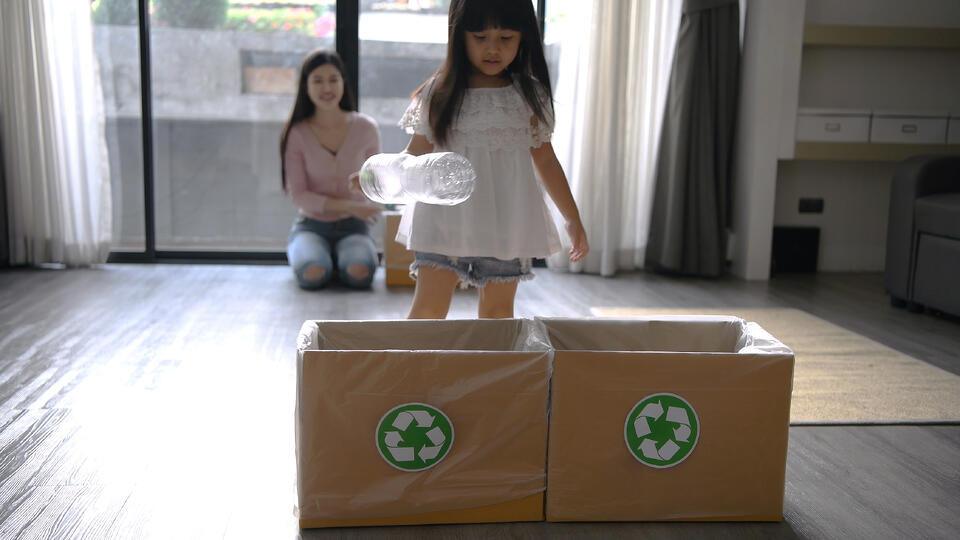
In a study by the National Environment Agency in 2019, it was found that 6 in 10 Singaporean households recycle regularly [5]. However, a significant proportion mistakenly classified items which should be reused or disposed of as recyclables, such as Styrofoam boxes or old clothes. Much education and awareness behind the importance of recycling and the proper way to recycle is still needed within the nation. The inconvenience to dispose your recyclables in the right manner is a small price to pay for the environment’s future.
How to recycle responsibly in Singapore?
Recycling in Singapore can be easy once you are well informed on what can be recycled. If you are unsure whether that plastic soap bottle or biodegradable bag can be recycled, a good place to start is by debunking certain myths on plastic recycling in Singapore or reviewing the things around you that you never knew you could recycle. The more we learn about proper recycling methods, the more we can grow and develop as an eco-friendly community.
To further encourage the rest of your family to be a part of this movement, have a recycling corner within your home to make recycling easily accessible. The steps are easy for the entire family to follow
Step 1: Check the blue bins on what can be recycled (National Environment Agency has even provided a list here)
Step 2: Ensure all items are rinsed and not contaminated with any food or liquids
Step 3: Drop clean recyclables into the communal blue bins
By following these steps, we can help improve our domestic recycling rates, and solve our impending waste disposal issue. Other areas to channel recyclables in Singapore include smart Reverse Vending Machines located across multiple locations in Singapore to drop off plastic drink bottles and aluminum drink cans and be rewarded in the process.
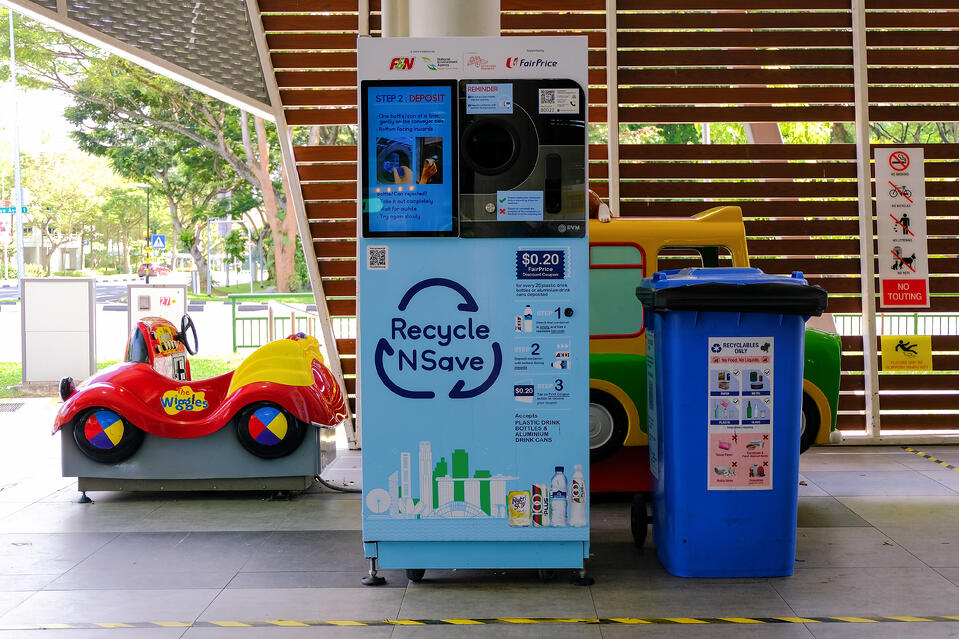
Electronic waste (or e-waste) such as laptops, cables and lightbulbs can be recycled as well. However, instead of dropping them in the communal blue bins across the estates, do take note that the recycling collection method for them is different and blue bins do not accept e-waste.
As the composition of each electrical item is different with some containing a certain amount of heavy metals and other substances of concern, a different recycling channel has been set aside to have these electronic equipment properly treated and recycled. With improper disposal and treatment of the various components, it can lead to environmental pollution and in turn harming human health. As such, various locations with dedicated e-waste recycling collection points across the island has been set up to allow easy drop off of electronics for recycling.
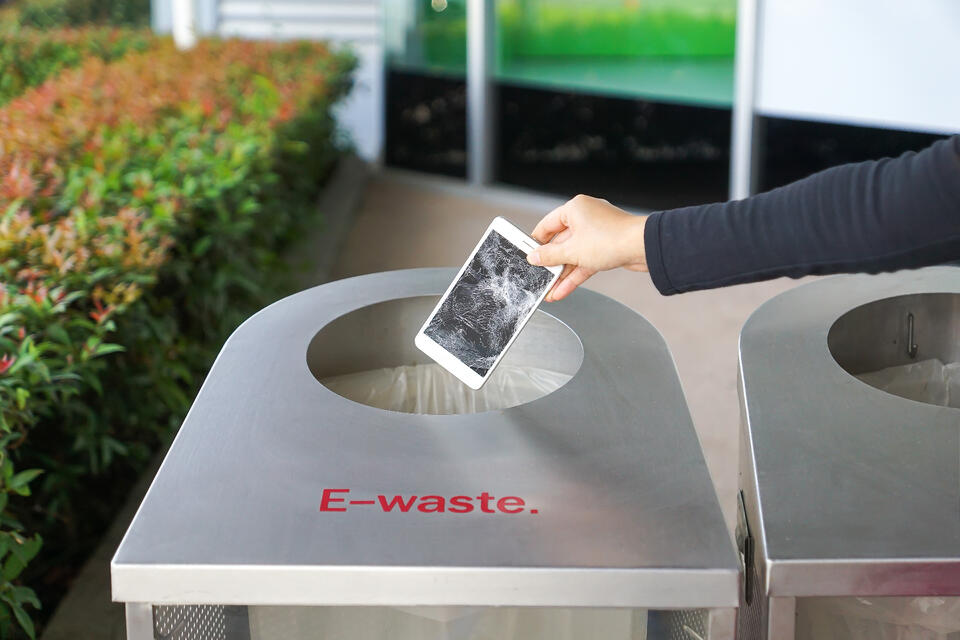
Overall, there is still much room for improvement in terms of the nation’s recycling effectiveness and efficiency. More Singaporeans are increasingly becoming more environmentally conscious and with the launch of the SG Green Plan 2030, it is a testament as a nation to work towards building a more sustainable Singapore. As we work towards this on the upcoming Global Recycling Day, let us all #PowerTheChange and do our part to be our own recycling heroes!
References:
- [1] (2017, December 18) World Economic Forum, Germany recycles more than any other country
https://www.weforum.org/agenda/2017/12/germany-recycles-more-than-any-other-country/ - [2] (2020) Recycling rate of plastic waste in South Korea from 2008 to 2018
https://www.statista.com/statistics/1074985/south-korea-plastic-waste-recycling-rate/#:~:text=The%20plastic%20recycling%20rate%20has,stood%20at%20over%2050%20percent. - [3] Global Recycling Day, GLOBAL RECYCLING DAY STARTS TO ANNOUNCE EVENTS AND ACTIVITIES FROM ACROSS THE WORLD
https://www.globalrecyclingday.com/global-recycling-day-starts-to-announce-events-and-activities-from-across-the-world/https://www.healthline.com/health/heartburn#causes - [4] (2019, June 18) Rapid Transition Alliance, Taiwan’s Transition – from Garbage Island to Recycling Leader
https://www.rapidtransition.org/stories/taiwans-transition-from-garbage-island-to-recycling-leader/ - [5] (2019, April 4) National Environment Agency, 60 Per Cent Of Singaporean Households Recycle Regularly
https://www.nea.gov.sg/media/news/news/index/60-per-cent-of-singaporean-households-recycle-regularly
Image Credits: Nylon Coffee Roasters
Source: The Sustainability Project
References:
- 1 (2019) Climate Healers, Animal Agriculture is the Leading Cause of Climate Change – A Position Paper https://climatehealers.org/the-science/animal-agriculture-position-paper/
More than meets the eye – How baking soda is a hidden gem in any household
- Home
- Residential
- Blog
- Archive by Category "Knowledge" (
- Page 7 )
[Post Date]
More than meets the eye – How baking soda is a hidden gem in any household
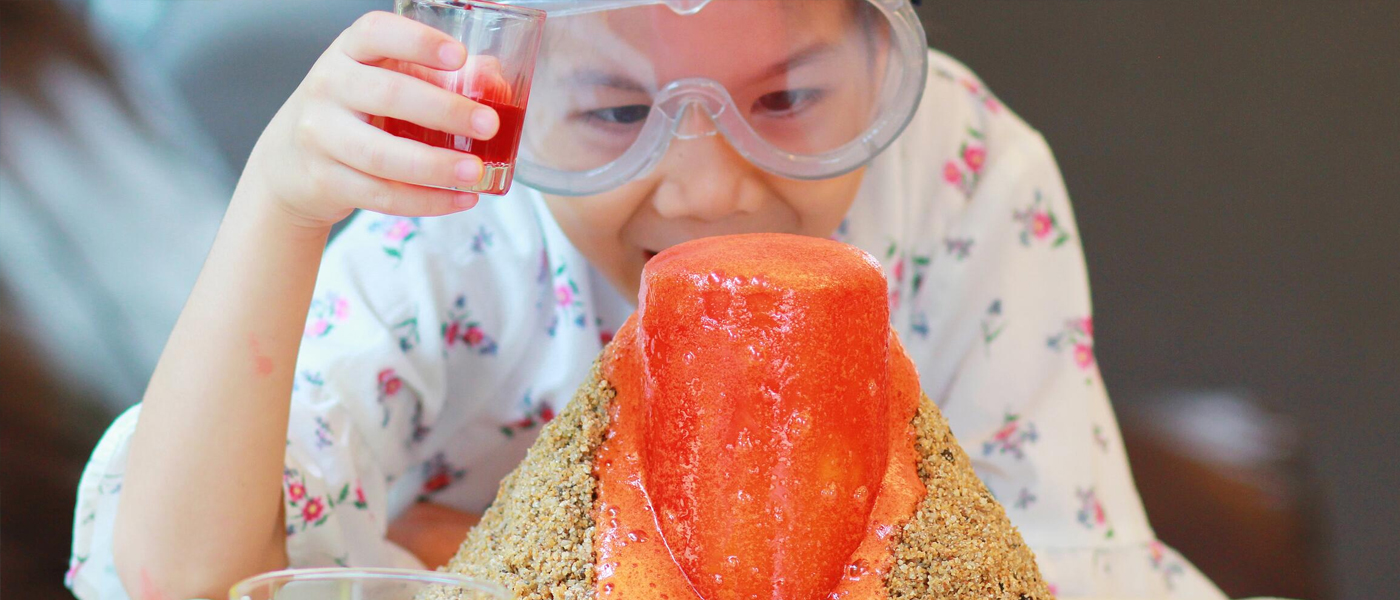
An unassuming pantry ingredient that truly is more than what you would expect, baking soda may just be one of your household’s best-kept secret with its versatility and the benefits it brings to the table. An indispensable item in any home, baking soda has multiple applications in the kitchen and the bathroom, to being a big hit among the children during playtime. Its manifold household uses instead of chemical-laden commercial alternatives makes this the greener option to keep around the house.
The baking ingredient has no chemicals or toxins within, putting your mind at ease when being utilised in your daily life for your home and family. To uncover the potential behind this ultimate multi-purpose ingredient, here are some ideas that you can use with baking soda to fully reap the wonderful benefits behind this magical ingredient.
Washing your fruits and vegetables
While an apple a day is said to keep the doctor away with the health benefits fruits and vegetables bring, we do want to make sure that the produce that we consume is pesticide-free as well. You will be surprised that even the most organic produce may contain pesticide residue too.
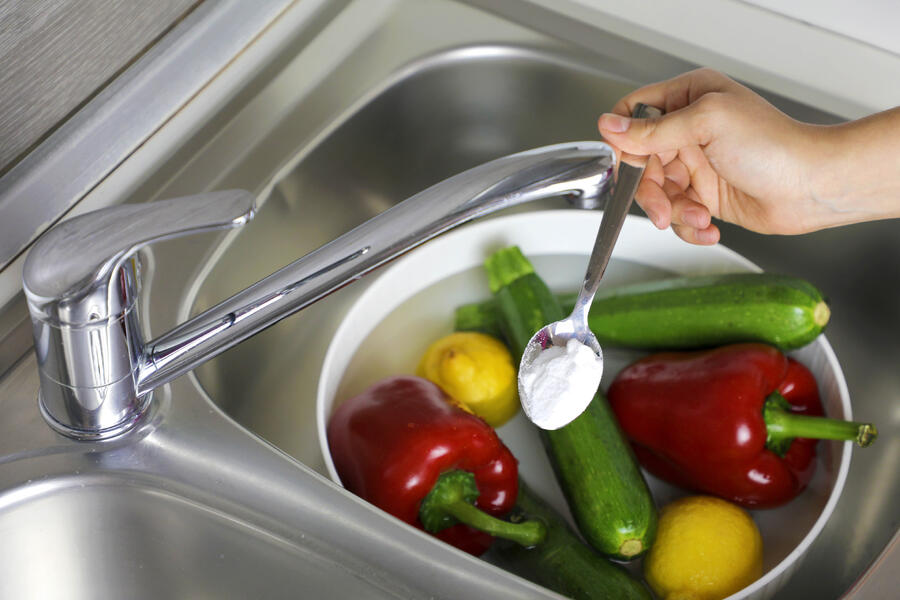
Instead of purchasing a fruit and vegetable liquid wash where you incur a greater use of plastic, consider a homemade version that is good for the earth and the entire family. According to a research by University of Massachusetts in Amherst, it was found that washing apples in water with a dash of baking soda is the most effective way to remove pesticide residue [1]. All you need to do is to leave your fruits and vegetables in a baking soda and water mixture (a sprinkle is really all you need) and let the solution break apart any leftover residue that cannot be seen with the naked eye.
Mouthwash
A mouthwash is a great step to include in maintaining your oral hygiene to keep your breath fresh and the gaps between your teeth clean. But reaching out for that funky blue mouthwash with a list of foreign ingredients, you will be surprised that making your own mouthwash is actually a much greener alternative and can be made possible with just baking soda that keeps your mouth just as clean while doing good for the environment.
Baking soda has shown to neutralise the acid of the mouth and an effective replacement for alcohol-based mouthwash [2]. The recipe is simple and only involves adding ½ teaspoon of baking soda to half a glass of water. Mix it all up and you have your own homemade organic mouthwash.
DIY family craft – Rainbow Volcano
A kid-friendly activity that can be easily made with baking soda and other household items is a testament that fun is always around us, even in the works of nature. This natural DIY volcano experiment sees the reaction between an acid and a base, and the results are safe for all and guaranteed fun for everyone.
The ingredients to make this magical rainbow volcano simply include items commonly found in the kitchen such as baking soda, vinegar, food colouring and dish soap. We recommend doing this green experiment outdoors or in an area where it is safe to get wet and easy to access for the children. A shallow plastic bin is a great option to contain the mess without compromising on the fun!
Fungicide
Fungi problems may be a common phenomenon faced by gardeners that can affect any plants’ health. It can quickly damage and even kill plants. Common symptoms include scabs, wilting, powdery mildew or rotted plant tissue.
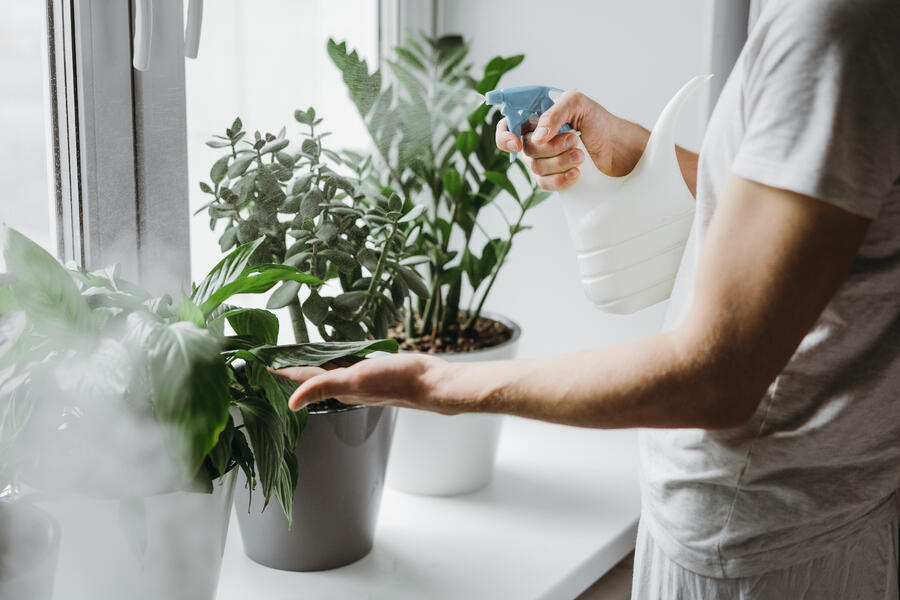
A quick and easy trick to treat this would be to make your own baking soda spray that is safe for plants and can prevent the fungi from spreading. This natural concoction is a great switch up from chemically formulated pesticide. Not only are they safe for plants and herbs, they are also safe for our bodies when used on edible produce grown for family and friends. Check out this recipe on how you can create your own mixture for your home garden.
Removing odours
Baking soda is great at absorbing odours and can leave any area feeling fresh and clean just as well as an air freshener. The list of areas it could be used as a deodorizer ranges from the trash can to smelly shoes or even the odour of overstayed food in your fridge. Simply fill a sachet of baking soda and let science do the work to neutralise and mask any odour. A great perk to making your own deodorizer is reducing the need to purchase air freshener cans. While these aerosol cans could be possibly recycled, a great habit to cultivate will be to reduce our consumption instead.
Treating heartburn
Heartburn is a burning sensation in your chest and is also often known as acid reflux [3]. It’s caused by acid refluxing out of the stomach when contents go back up into the esophagus.
The causes of it include overeating or consumption of certain types of food such as onions, citrus products, or spicy food.
Baking soda can help to treat this by neutralising the acid [4] when taken with care. Simply by mixing half a teaspoon with at least half a cup of water may be a quick natural fix to relieve the symptoms.
Stain remover
Removing those pesky food and drink stains from your clothes may just have gotten easier, more affordable, and greener with the simple use of baking soda. When dissolved with water, the baking soda can interact with the acid found in stains and help to remove them.
Simply add it into your laundry detergents when washing your clothes and it can get them looking fresh as new.
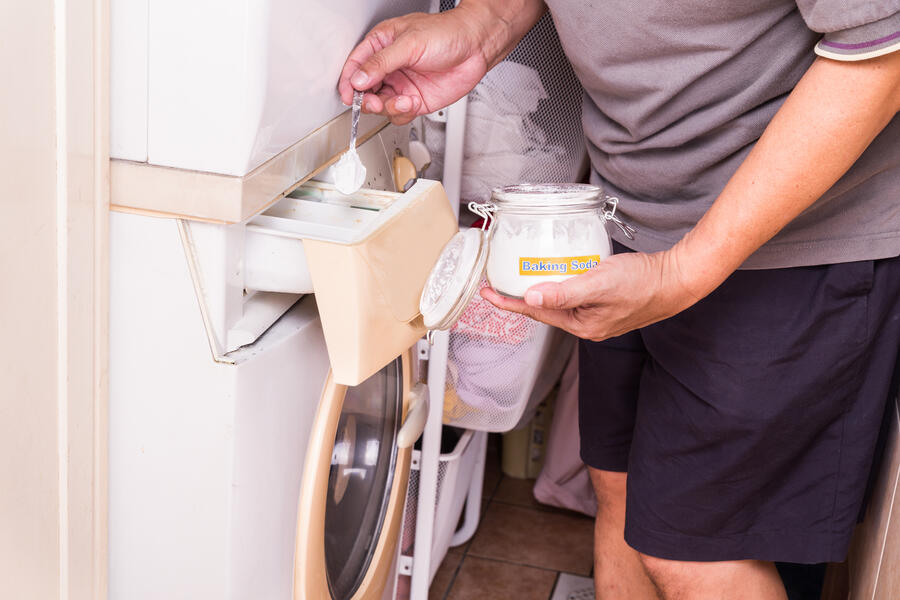
You could even cut your energy use with your washing machine due to quicker loads. Baking soda aids in boosting detergent performance and reducing suds for a shorter wash time. Finding ways to reduce your energy use at home is always a step forward towards a greener future.
If baking soda was just your usual baking must-have, we hope this guide has opened your eyes on the infinite uses of this hidden gem. Stocking up on this non-toxic ingredient is not only great for reducing unnecessary plastic packaging from multiple cleaning and household products, it will keep your home free of dangerous chemicals for a healthier environment [5]. You can even take the extra step to purchase it from your local bulk stores which further eliminates the use of single-use plastics!
After all, taking collective steps to being more mindful in our consumption sends a message to corporations and brands on the changing trends and the importance of living more sustainably. By adopting these small green practices, we can together #PowerTheChange for a greener future.
References:
- [1] (2017, October 28) Reuters, Baking soda plus water best for washing pesticides off apples
https://www.reuters.com/article/us-health-pesticides-apples/baking-soda-plus-water-best-for-washing-pesticides-off-apples-idUSKBN1CW2KV - [2] (2017) The effect of sodium bicarbonate oral rinse on salivary pH and oral microflora: A prospective cohort study
https://www.ncbi.nlm.nih.gov/pmc/articles/PMC5773983/ - [3] (2020, April 17) Healthline, What You Need to Know About Heartburn
https://www.healthline.com/health/heartburn#causes - [4] (2019, October 25) Healthline, How to Get Rid of Heartburn
https://www.healthline.com/health/gerd/heartburn-relief#elevate-upper-body - [5] (2019, April 4) Maid 4 Condos, Cleaning Tips for a Cleaner and Healthier Condo
https://www.maid4condos.com/cleaning-tips-cleaner-healthier-condo/
Image Credits: Nylon Coffee Roasters
Source: The Sustainability Project
References:
- 1 (2019) Climate Healers, Animal Agriculture is the Leading Cause of Climate Change – A Position Paper https://climatehealers.org/the-science/animal-agriculture-position-paper/
5 Sustainability Trends to Expect in 2021
- Home
- Residential
- Blog
- Archive by Category "Knowledge" (
- Page 7 )
[Post Date]
5 Sustainability Trends to Expect in 2021
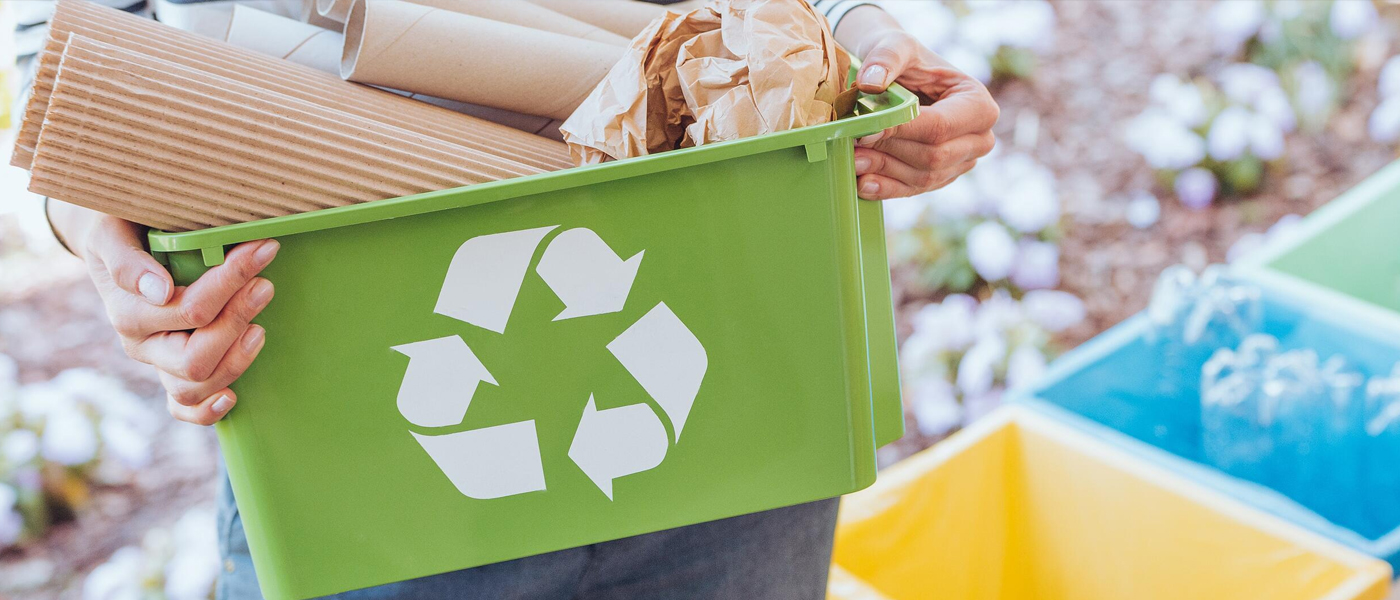
2020 has brought about new challenges that were beyond what we may have expected at the beginning of last year, but a silver lining that has emerged would be the greater focus on the environment. From reduction in emissions to reduced fashion consumption, various beneficial changes in sustainability practices happened and we know the planet will definitely welcome it.
With the rest of 2021 ahead of us, we have put together some sustainability trends that we can expect, given the progress made last year. Here are some of the trends to keep a look out for this year.
Sustainability a core focus for brands
With a greater spotlight on climate change and the detrimental effects surrounding it in the long run, there has never been a more important time to collectively become aware of how we – as individuals, corporations, and businesses – are affecting the planet. As such, a growing number of brands and organisations have made sustainability a core focus for the business. With a greater awareness of the issue, consumers and the public are calling for more to be done for the good of our Earth. In fact, three Singapore firms made it in to the world’s most sustainable companies list [1].
A greater responsibility to lead the sustainable development of global society across brands are starting to rise. With this shift in priorities, brands have delved into ways and initiatives that can foster a lifestyle of sustainability, providing options to use less plastic, recycle or choosing sustainable options.
Geneco has also launched a green initiative to recycle used red packets as a nation this Chinese New Year. This is in partnership with four other local businesses – CRU, IUIGA, REFASH and Tay Paper Recycling – to develop easy physical touchpoints to make recycling accessible. Collected red packets across 29 publicly available recycling bins will be sent to a recycling plant by Tay Paper Recycling to be pulped and made in other paper products.
Adopting a greener lifestyle at home
Eco-friendly and sustainable products among family lifestyles have been around for a long time and we predict it will continue to be the trend for a healthier earth in 2021. This can range from starting of your green journey by reducing your plastic waste or setting up a recycling bin at home, to growing your own fruits and vegetables and upcycling the items around the house.
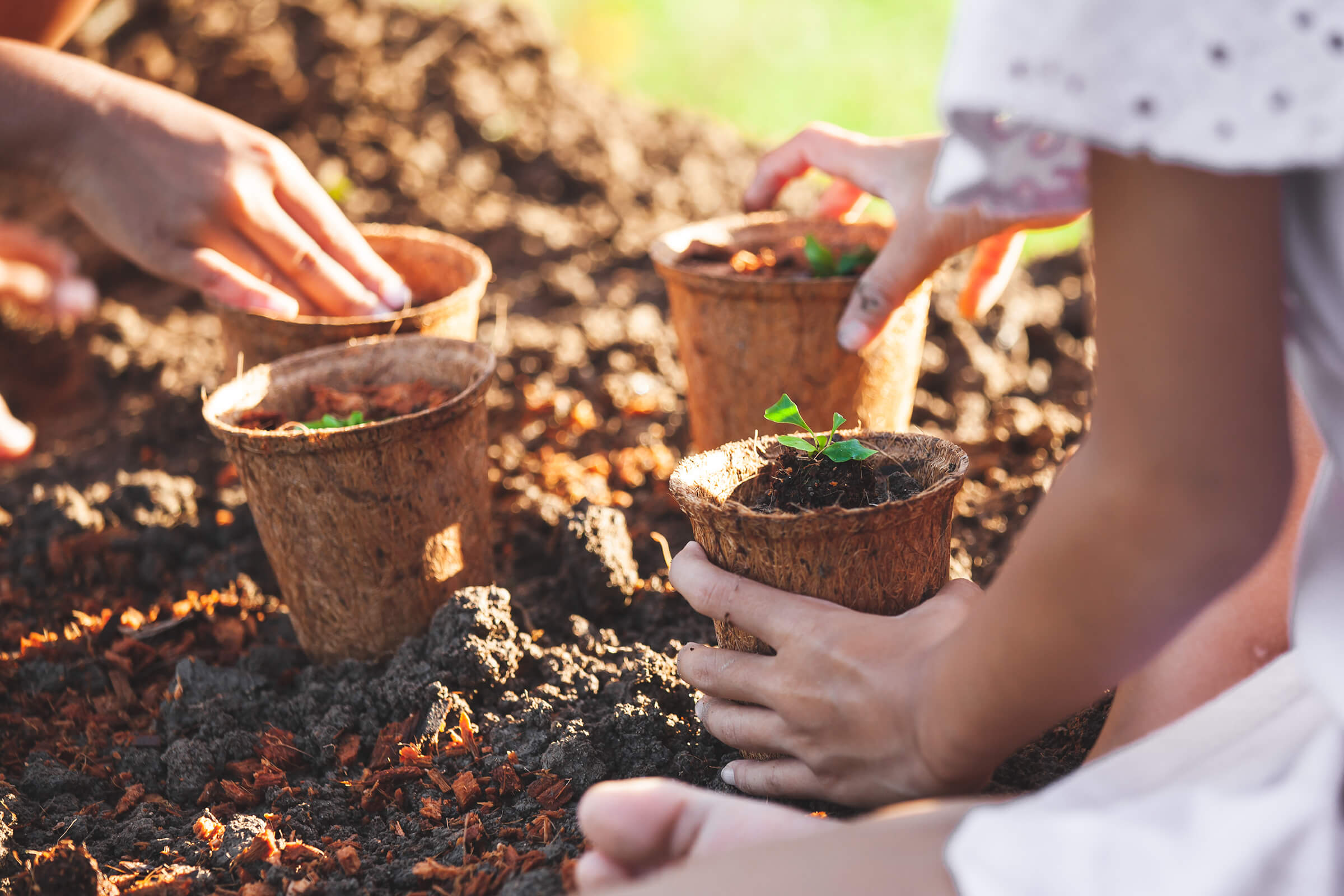
In addition, with the increased number of brands committed to have sustainability as a core focus, more schools are championing environmental sustainability as well [2] and play a crucial role in preparing future generations to be environmentally responsible. We can expect more consumers and families to practise what they have learnt and choose a greener lifestyle to resonate with the message of preserving what we have and to help conserve the environment for the next generation.
Working from home
The pandemic sure has brought about drastic changes to the work lives of many Singaporeans which have also impacted how they manage their time and productivity. Because of the situation, more companies have allowed their employees to work at home, which eliminates the need to commute to work. This helps to reduce the amount of fuel usage to run vehicles which in turn, translates to lesser greenhouse gas emissions. In fact, Global Workforce Analytics, estimates that working from home half the week can reduce emissions by 54 million ton every year in the U.S [3].
If working from home seems to be the norm for you for the rest of 2021, consider setting rules and boundaries at home to help your kids stay on track with their roles while you are busy with your online meetings. This not only lets you reap the full benefits that working from home gives in terms of the flexibility and efficiency, it also allows one to strengthen their bonds with their children and family and share there is a time for everything. We have even put together some tips on how you can place your family first even when you are busy working from home. That way your family gets the attention they need and work still gets done!
Rediscovering Singapore
The reduction in air travel has significantly reduced the amount of greenhouse gas emitted in 2020. With travelling out of the country for your next vacation being put on hold for the unseeable future, look no further than your own backyard and rediscover the hidden gems located across Singapore. Beyond the city sights that Singapore is famous for, consider going the off-beaten track and explore the lush scenic greenery the island has to offer. We have even put together a list of hiking trails to embark on to get away from the bustle of the city and take in the fresh air from above.

Take your kids on an adventure around various spots in Singapore to show that interesting sights are not too far from your doorstep. All Singaporeans above 18 are even entitled to $100 worth of SingapoRediscovers vouchers in support of local businesses during this difficult time. Our personal recommendations include embarking on a Kampong and Farm Full Day Tour for a back-to-the-olden day tour and to see first-hand how local vegetables are grown in support for local food production, or even an ecological tour in Sungei Buloh Wetland Reserve to bask in the natural beauty Singapore’s first ASEAN Heritage Park has to offer.
Electric Vehicles
Electric vehicles are here to stay with Singapore having committed to phase out petrol vehicles by 2040 [4]. Starting from 2021, Singaporeans can expect the adoption of electric vehicles to be more attractive with an early adoption scheme to be rolled out with rebates capped at $20,000 per vehicle. This is among other initiatives such as a reduced road tax and an expansion of the charging infrastructure, allowing more Singaporeans to be able to enjoy the enhanced incentives implemented to encourage uptake of this sustainable transportation option.
If electric vehicles may be out of your reach in 2021, consider switching to public transportation to reduce the amount of emissions generated as compared to driving your own vehicle. Car-pooling is another great way to ensure you keep your carbon footprint low whenever you are travelling from one end of Singapore to the other!
A promising 2021 is in the line-up as we expect these trends to take from and shape. Here at Geneco, going green will always be part of our voice in advocating for a more sustainable future for our customers and Singapore. You can look forward to seeing how Geneco continues to do its part for the earth and power the change.
References:
- [1] (2021, January 26) Singapore Business Review, Three Singapore firms named to world's most sustainable companies list
https://sbr.com.sg/economy/news/three-singapore-firms-named-worlds-most-sustainable-companies-list - [2] (2020, November 6) TODAY, A surprising discovery of how Singapore schools are championing environmental sustainability
https://www.todayonline.com/voices/surprising-discovery-how-singapore-schools-are-championing-environmental-sustainability - [3] (2019, October 7) Capital, The Environmental Benefits of Remote Working
https://www.capital-ges.com/the-environmental-benefits-of-remote-working/ - [4] (2020, February 18) The Straits Times, Singapore Budget 2020: Push to promote electric vehicles in move to phase out petrol and diesel vehicles
https://www.straitstimes.com/singapore/transport/singapore-budget-2020-push-to-promote-evs-in-move-to-phase-out-petrol-and-diesel
Image Credits: Nylon Coffee Roasters
Source: The Sustainability Project
References:
- 1 (2019) Climate Healers, Animal Agriculture is the Leading Cause of Climate Change – A Position Paper https://climatehealers.org/the-science/animal-agriculture-position-paper/
Tips to help you organise your wardrobe and save the earth this Chinese New Year
- Home
- Residential
- Blog
- Archive by Category "Knowledge" (
- Page 7 )
[Post Date]
Tips to help you organise your wardrobe and save the earth this Chinese New Year

Whether you have resolved to declutter your wardrobe, it is always a good idea to start the beginning of the year with a fresh and organised wardrobe to get you kickstarted on a clean note. With Chinese New Year right around the corner, it may even be that extra motivation to do a spring cleaning of your closet. But if you are not sure how or where to get started, we have curated a step-by-step guide that will take you from A to Z on getting your wardrobe clean while still doing good for the earth.
Step 1: Take it all out
The first step is the easiest step and certainly not much of a huddle to get you started. Simply begin by taking everything out of your closet, empty your drawers and get your hangers off the rack. It might seem like you are creating a mess, but in fact emptying your wardrobe is very much a good check on the total amount of clothes you have. This is to help you realise and give you a sense of the magnitude of clothing items that you own, and certainly a reminder on your consumption habits. Once you have a good idea on the total number of clothes you own, it easily brings you to the next step of the cleanout.
Step 2: Set a goal
Once your clothes are all together in a giant pile, take note of the size of it and set goals to manage your wardrobe situation. If your wardrobe is bursting and your pile of clothes seems to be a huge mountain, think about the outcome you would want to achieve. It could be mixing and matching your outfits among key pieces in your collection that you frequently wear, or simply choosing to pass on any clothes that has not been worn for the past year or so.

A great tip that could get you started on your goals for your wardrobe is the “one item in, one item out” rule. For every new piece of clothing you introduce, you will need to get rid of another to prevent an overcrowded wardrobe. With a clear intention set in mind for your wardrobe, it will not only help you in the next step of the decluttering process, but it could be the anchor in your shopping habits whenever you are looking to add new pieces into your collection, encouraging you to think twice before carting out.
Step 3: Categorise and sort
Now comes the hardest part which is for you to tackle the pile of clothes that you have created and categorise them into a “throw” or “keep” pile. With every piece of clothing, you can decide by asking the great question of whether you have worn it in the past six months. If you catch yourself thinking you will wear it in the future but have not worn it a single time in the past six months, it may be time for you to let it go into the “throw” pile. In addition, any items that are damaged beyond repair, do consider throwing them out as well.
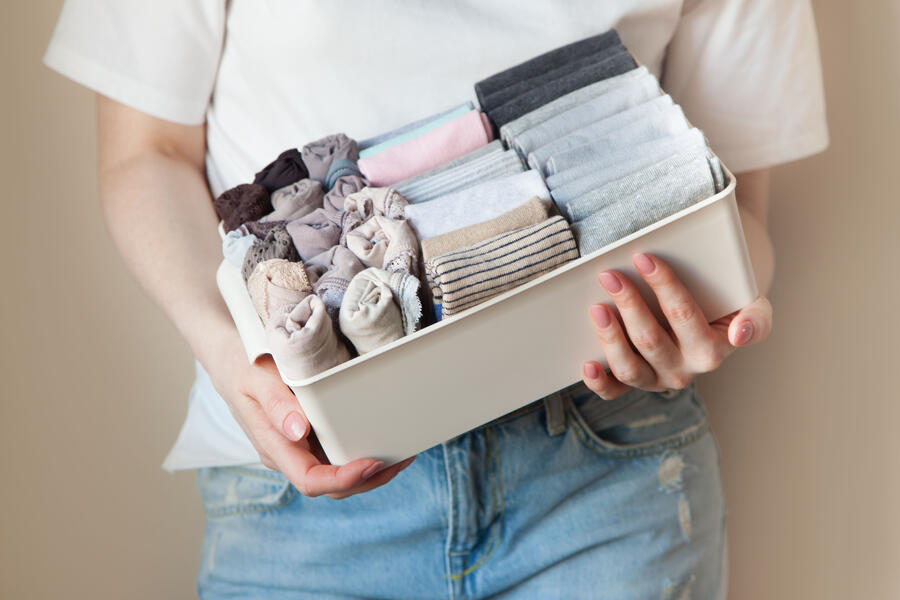
With the items you have set your heart on keeping, evaluate the categories you can sort them under and have them arranged in order within your wardrobe. From t-shirts to undergarments, having categories will help allocate each item to a spot it owns.
Step 4: Rethinking the “throw pile”
You should have a much tidier and neater wardrobe at this junction with a “throw pile” set aside. With this pile of clothes, there are many ways to deal with it and they may not necessarily entail discarding them. In Singapore, according to figures from the National Environment Agency, 168,000 tonnes of textile waste were produced in 2019, of which only 4% was recycled [1] ! Should your clothes be in a mint condition with minimal damage, consider the following ways to repurpose them that will be of good for the environment.
Upcycle
Clothes does not just have to function as clothes. Upcycling them can inject new life into these garments and create something entirely new. You could turn an old t-shirt into a reusable bag or have your socks function as hand puppets that are fun to entertain your children!
Sell online or do a swap
While a piece of clothing may be of a style you have outgrown or it simply no longer fits, consider if it could be an item someone else would appreciate. Organise a clothes swap with your friends to experiment with different styles of clothing from each other’s closet or sell it on a local marketplace such as our ChangeMakers partner REFASH, a secondhand fashion marketplace that looks to connect women’s closets and reduce textile wastage in Singapore!

Donate
Clothes donation bins by various organisations across the island are great options as well. Most of these donation bins are tied to businesses with a cause or an organisation looking to do good for the community. By contributing your lightly worn clothing, your clothes are certainly given a new lease of life with it either being rehomed to an individual who enjoys it or used to raised funds for a good cause.
Organising your closet may seem a daunting task at first, especially with a bursting wardrobe of clothes. However, by repurposing the pieces that you no longer wear into new homes and evaluating your consumption habits, it serves to start your year on a sustainable note, breathing life back into your clothes and our planet!
As you clean up your wardrobe this Chinese New Year, don’t forget to clear out the old red packets that you may have accumulated as well. In partnership with CRU, IUIGA, REFASH and Tay Paper Recycling, Geneco is introducing used red packet recycling bins across 29 public locations from 10 February to 8 March. Collected red packets are recycled into paper pulp and repurposed into other paper products! For more information on the locations click here! Let’s all take this opportunity to Power The Change together for the planet!
References:
- [1] NEA. (2019), Waste Statistics and Overall Recycling
https://www.nea.gov.sg/our-services/waste-management/waste-statistics-and-overall-recycling
Image Credits: Nylon Coffee Roasters
Source: The Sustainability Project
References:
- 1 (2019) Climate Healers, Animal Agriculture is the Leading Cause of Climate Change – A Position Paper https://climatehealers.org/the-science/animal-agriculture-position-paper/
Eco-friendly lifestyle tips to practise as Singapore enters Phase 3
- Home
- Residential
- Blog
- Archive by Category "Knowledge" (
- Page 7 )
[Post Date]
Eco-friendly lifestyle tips to practise as Singapore enters Phase 3

The long-awaited Phase 3 have finally kicked off and it is a sign of progress for Singapore in our fight against the pandemic. Even though many of the initial recommended guidelines are still in place as we enter Phase 3, most Singaporeans understand that the fight against this pandemic is far from over. While many of us were heartened by this milestone we have achieved together as a nation, let us also be reminded that there’s still much to be done for the Earth against climate change. We have put together these sustainable lifestyle tips which we can continue to practise, even with the new guidelines of Phase 3.
Start with reusable masks
Wearing a face masks is still an essential even in Phase 3. Everyone must play their part in being socially responsible as we adapt to our new lifestyle with the guidelines in place.

If you are still using disposable masks when you head out, consider making a switch and have a go with reusable masks which are just as good, and even more comfortable! Used disposable masks and other personal protective equipment cannot be recycled and are increasingly washing up on shorelines and causing harm to wildlife.
While the use of disposable face masks unfortunately cannot be avoided entirely, the mass public can choose to adopt the use of reusable masks for their daily wear. This can help reduce the amount of waste incurred and do our part for the Earth!
Choose to dine in
Singaporeans have been patiently waiting to be gathering in a group of more than 5 and it is time to rejoice! Group sizes permitted to gather socially have now been increased to a maximum of 8 people when heading out or visiting others!
To celebrate being able to come together in a larger group, a great way would be to choose to dine in at restaurants or food establishments when you can. After months of staying in, this has led to a rise in takeaways and home deliveries. The number of extra plastic waste generated during the two-month circuit breaker is an alarming 1,334 tonnes among Singapore households1 (that is about 90 double-decker buses)!
Have a change in scenery and opt to dine in food establishments when meeting your friends and family outside! By choosing to dine in, this reduces the amount of plastic that can potentially incur from takeaways or home deliveries, a conscious effort for the environment. Do remember to continue to be socially responsible and ensure you are safely distanced from other guests during your meals!
Consider going car-lite
With many adopting a more flexible working arrangement in Phase 3, it certainly puts into perspective the need for a car to go about our daily lives.

If you are one of the many who have experienced a change into your daily routine where staggered working hours and non-traditional flexible work arrangements seem to be more regularly adopted now, consider going car-lite and opt for public transportation if you can. A major advantage from going car-lite is the fall in amount of carbon emissions released into the atmosphere. With less cars on the road, carbon footprint of the masses will be reduced and there will be better air quality – a huge benefit for our planet!
Practise Mindful consumption
Similar to our social gatherings, capacity limits and for malls and large standalone stores have also increased. Resumption of shopping and consumption activities within these venues are expected to climb as well with the upcoming festive occasions.

Being able to enjoy some physical retail therapy might be a mood booster among these difficult times, but before you cash out and sign off that purchase, consider taking a step back and rethink the necessity of your purchase. Looking for new pieces to refresh your wardrobe? Why not consider second-hand fashion which are as good as new with one of our ChangeMakers – Refash, Singapore’s largest online and offline thrift store. Or if you are sourcing for natural organic produce as part of the upcoming food preparations, go for retail concept stores such as Scoop.
Being mindful in your consumption is not just about buying what you need, but it can also be about supporting causes that are beneficial to our environment. This is a habit you can inculcate not just for Phase 3 but for the rest of 2021 as well!
With Phase 3 having commenced, it serves as a fresh start to power us through 2021! Keeping yourself and those around you safe will still be of paramount importance, but without compromising on safety, more can be done for the environment to fight climate change and global warming. Together, the accumulative effect of these small actions can contribute to a larger cause for our Earth!
References:
- [1] Ang, L.S, Oan, C (2020, June 21) Here’s what months of food deliveries and takeaways have taught us
https://www.channelnewsasia.com/news/commentary/plastic-zero-waste-byo-food-delivery-takeaway-resuable-container-12844324
Image Credits: Nylon Coffee Roasters
Source: The Sustainability Project
References:
- 1 (2019) Climate Healers, Animal Agriculture is the Leading Cause of Climate Change – A Position Paper https://climatehealers.org/the-science/animal-agriculture-position-paper/
Discover another side of Singapore with these hiking trails
- Home
- Residential
- Blog
- Archive by Category "Knowledge" (
- Page 7 )
[Post Date]
Discover another side of Singapore with these hiking trails
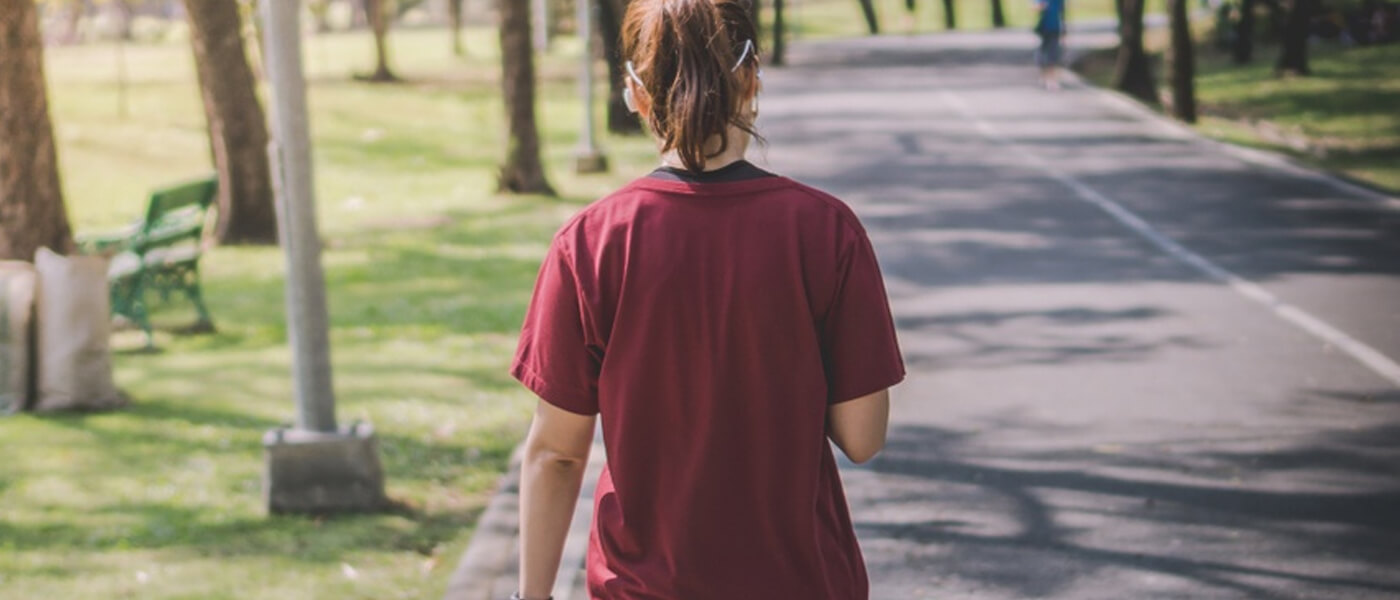
Beyond the city sights and the tall skyscrapers, there is certainly more to Singapore than just its iconic urban architecture. While we might not be blessed with tall mountains, the City in a Garden is true to its name with scenic trails and green corridors to discover all across the country. There are plenty of nature reserves and trekking trails filled with lush greenery and rich biodiversity to soak in some fresh air and be one with nature.
From trekking the Bukit Timah Nature Reserve to taking a boat ride to Pulau Ubin, here are some trails in Singapore that will let you escape the bustle of the city and get in touch with our green roots. Grab a friend or two and strap on your walking shoes, as we bring you our favourite hiking trails for you to set foot and discover a whole new side of Singapore.
1. Chestnut Nature Park
Chestnut Nature Park is in fact the largest nature park in Singapore. Located near Bukit Timah on the fringe of the Central Catchment Nature Reserve, this nature park spans across 81 hectares and is larger than 110 soccer fields. There are three hiking trails available for trekkers to explore the park and even includes a mountain biking trails for cycling enthusiasts. The scenic trails at the nature park are never dull with routes of various difficulty and it being a hotspot for bird watchers. You may even get a glimpse on some of Singapore’s rarer birds on your hike!
Click here on directions on how to get there.
2. Central Catchment Nature Reserve
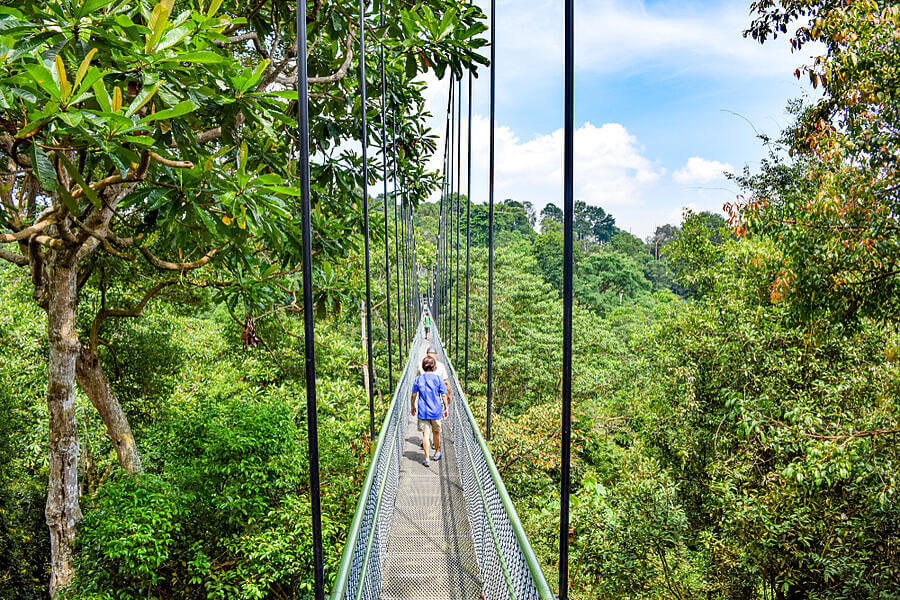
With Singapore being home to four nature reserves, the Central Catchment Nature Reserve is the largest one out of the four and spans over 2000 hectares. The nature reserve is well known as the country’s green lungs with a forest like no other. Take a trek through the reserve with its specially designed nature trails across the four reservoirs within it. The MacRitchie Reservoir Park is a great starting point for the 20km network of trails and boardwalk for hikers of all levels. Don’t miss out Jelutong Tower in the heart of the forest; be rewarded with a sweeping view of the Central Catchment Nature Reserve and the waters of MacRitchie Reservoir after climbing up the seven-deck observation tower!
Click here on directions on how to get there.
3. Bukit Timah Nature Reserve

Undoubtedly one of the most popular local hiking spots in the city, Bukit Timah Nature Reserve is the tallest natural hill with one of the most diverse species of plants, animal, and insect life in Singapore. For those who are geared for a good workout, the steep trek up to the summit will leave you wanting more. Due to the popularity of this trail, we suggest heading there during off peak hours to full enjoy the green experience this nature reserve has to offer.
Click here on directions on how to get there.
4. Southern Ridges
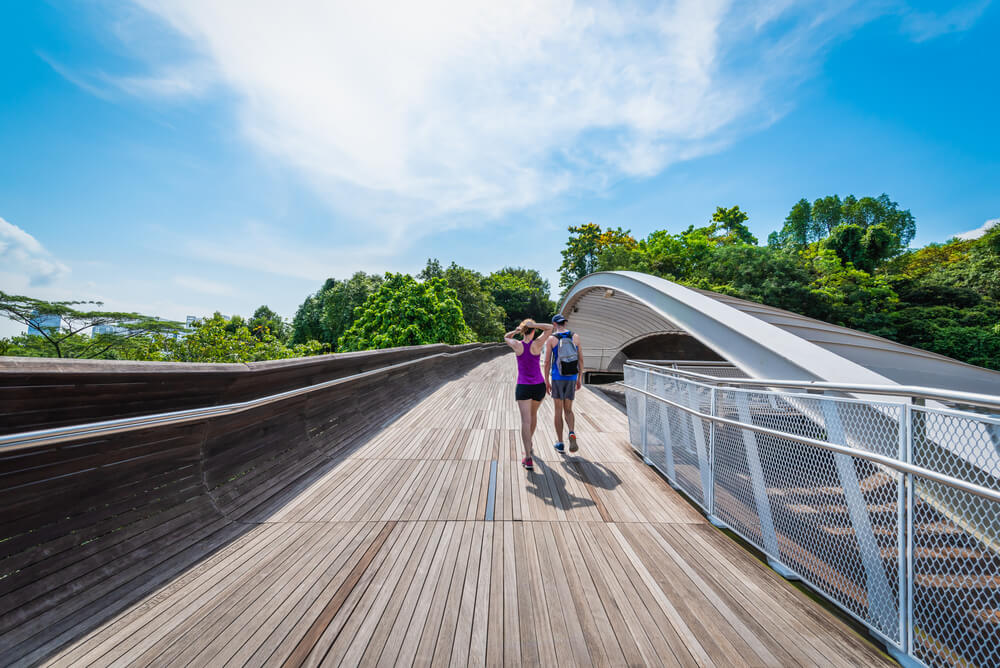
Home to panoramic views of the city, the Southern Ridges is a great option if you are looking to challenge yourself and conquer five parks (Mount Faber Park, Labrador Nature Reserve, Hort Park, Telok Blangah Hill Park and Kent Ridge Park) at one go! The entire trail spans across 10km and is definitely not for the fainthearted. But with every step you take, you can expect to be rewarded with a unique outdoor experience and to look forward to a stellar view of the harbour from Henderson Waves.
Click here on directions on how to get there.
5. Coney Island Park
A bird lovers paradise, don’t be surprised when you spot rare bird species such as eagles or owls at Coney Island Park. Visitors will be surprised to know that there are about 80 species of birds on this mangrove habitat and the park serves as a sanctuary for migratory birds!
The rustic green space in the North-East part of the city focuses on conserving energy and water and retaining the natural elements of the park. The Casuarina Exploration playground within the park is constructed out of recycled Casuarina trees, creating natural wooden bridges and log fences for kids to enjoy and soak in the nature vibe! Whether you are opting for a breezy walk or a cycle around this picturesque island, a trip on the island is great family time for an afternoon of fun.
Click here on directions on how to get there.
6. Pulau Ubin
Transport yourself back in time as you take a glimpse of what Singapore was like during the 1960s at Pulau Ubin. The little island is a 20-minute bumboat ride away from the main island and a gem in the east. Exploring the island on foot is very much possible with much to see!
Take a 40-minute trek to Chek Jawa Wetlands, an intertidal zone rich in biodiversity. The boardwalks meandering within the mangrove forest and the coastline brings you closer to the surrounding flora and fauna. Crabs and other living organisms unique to the mangrove and coastal habitat can be spotted as well, which makes a great learning experience for the entire family!
If a challenge is what you are looking for, take a hike up Puaka hill, the highest peak of Pulau Ubin. We guarantee a breath-taking view of the quarry awaits at the end of the steep hike!
Click here on directions on how to get there.
Go green even at home
As we take time out of our busy schedules and enjoy the health benefits brought about from trekking on these scenic trails, let us not forget the importance of preserving these green spaces for future Singaporeans.
Protect these natural landscapes with eco-friendly habits such as bringing your own water bottle for the hike and leave no trace behind by not littering and properly disposing your trash and recyclables. The green spaces that we enjoy today are through the conscious efforts of maintaining and advocating the importance of green in our day-to-day, and hence a trait we should pass on to future generations.
You can also do your part for the environment even in your daily life with your choice of electricity plan! Geneco’s Get it Green plan allows you to do so with 100% carbon-neutral electricity, so find out how you can power a more sustainable world here!
Image Credits: Nylon Coffee Roasters
Source: The Sustainability Project
References:
- [1] Ang, L.S, Oan, C (2020, June 21) Here’s what months of food deliveries and takeaways have taught us
https://www.channelnewsasia.com/news/commentary/plastic-zero-waste-byo-food-delivery-takeaway-resuable-container-12844324
Sustainable gift wrapping alternatives to wrap up this jolly season
- Home
- Residential
- Blog
- Archive by Category "Knowledge" (
- Page 7 )
[Post Date]
Sustainable gift wrapping alternatives to wrap up this jolly season

Gifting and receiving a present is always exciting jolly time for everyone. The anticipation and excitement as you unwrap your gifts will always be a wonderful experience, be it for the young or old. As we approach the season of giving this year, let us take a look at how this gift exchange may be affecting our environment.
The challenge with gift wrapping
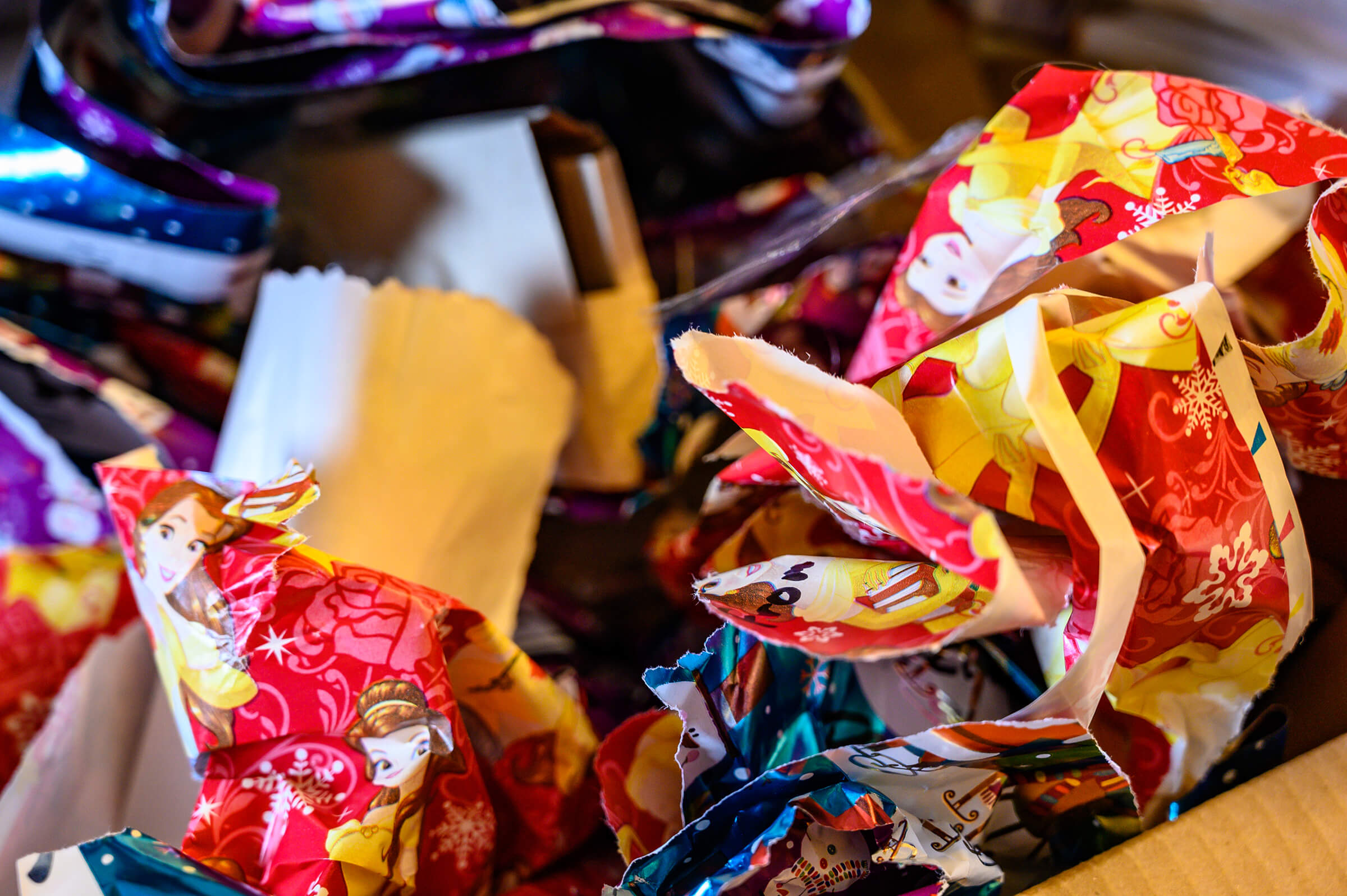
Everyone loves the feeling of unwrapping and tearing into their presents, but have you ever stopped to think about the amount of wrapping papers we use every year? According to statistics by the NEA, Singapore produced just above 1,000 metric tonnes of paper waste in 2019[1], which is hardly surprising, considering each individual receives about 5 to 6 presents every year. Multiply that by Singapore’s population number and the math easily adds up to a huge amount of wrapping paper used, simply on presents.
Not only do gift wrappers contribute to a huge amount of waste produced by the nation every year, they are also often dyed and laminated, and some even contained non-paper additives such as gold and silver colouring, glitter and plastics, making the paper unrecyclable[2].
With this in mind, here are some suggestions for you to consider the next time you plan on gifting someone a present, making it a greener and more sustainable one!
Wrapping paper alternatives

We’re spoilt for choice when it comes to going green in your gift wrapping! As long as you’re willing to get a little creative, you will certainly be able to find an alternative out there suiting your needs!
To start off, simply look around your home for discarded paper, fabric, and any materials that you no longer have use for and can still be used to be wrapped around your present. This may take the form of old newspapers, discarded packaging paper, plastic bags, or even used wrapping paper that you have received from others! Think of it as a scrapbook of wrapping paper that you can customise, decorate, and personalise for your loved ones.
If reusing old material doesn’t feel quite right for you, there are also plenty of recyclable wrapping paper options for you to consider. You may purchase Kraft paper that is fully recyclable[3] and biodegradable from stationery stores or the local supermarket. If not, simply visit one of the many arts and craft stores in Singapore selling colourful, yet recyclable paper for you to use for your presents.
Finally, for those who aren’t as artistically inclined as to design and wrap your own gifts, you can always consider used containers such as old cookie tins or tea boxes to house your gifts this year. This creative yet, hassle-free gift wrapping option also reduces unnecessary purchases of gift wrappers while upcycling items around the house.
Gifts that don’t require wrapping
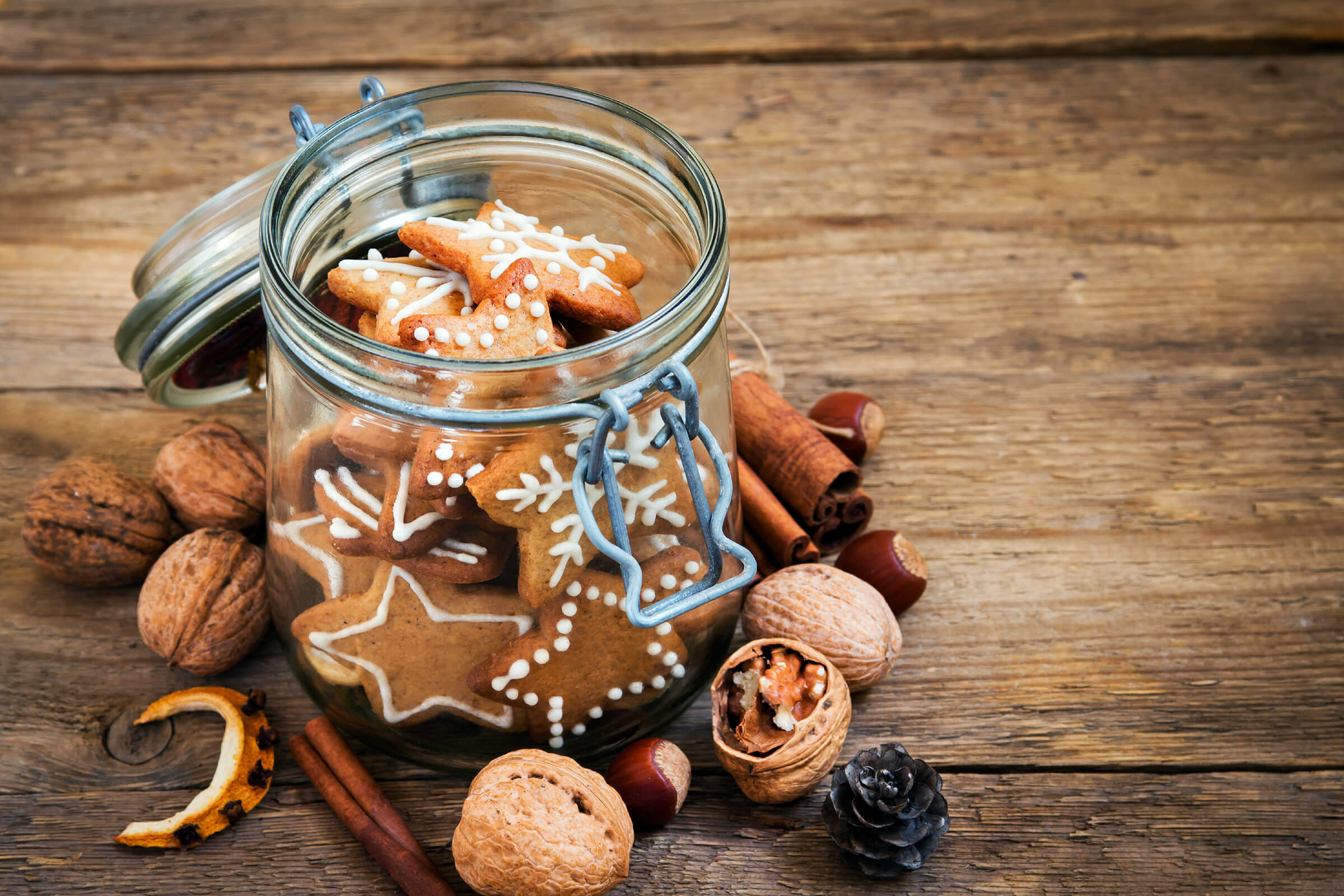
Avoiding using wrapping paper this jolly season does not just end at gift wrapping alternatives. Another way of giving without harming the environment is to consider presents that require no wrapping paper at all!
For instance, why not try your hand at baking or cooking this year? Cookies and pastries are great treats that everybody loves to indulge in regardless of the occasion, and we’re sure many would be touched by your homemade batch of brownies or cookies baked with love! Once you’ve done the work in the kitchen, simply pack the pastries in glass jars or Tupperware boxes, instead of disposable plastic boxes to store the food!
Alternatively, why not go for the gift of experiences instead of physical gifts? Take a family member or a friend out for their favourite meal or enjoy fun activities and have a nice catch up with them! This way, both you and your loved ones will be able to create fond memories and spend meaningful time together.
Wrapping Up
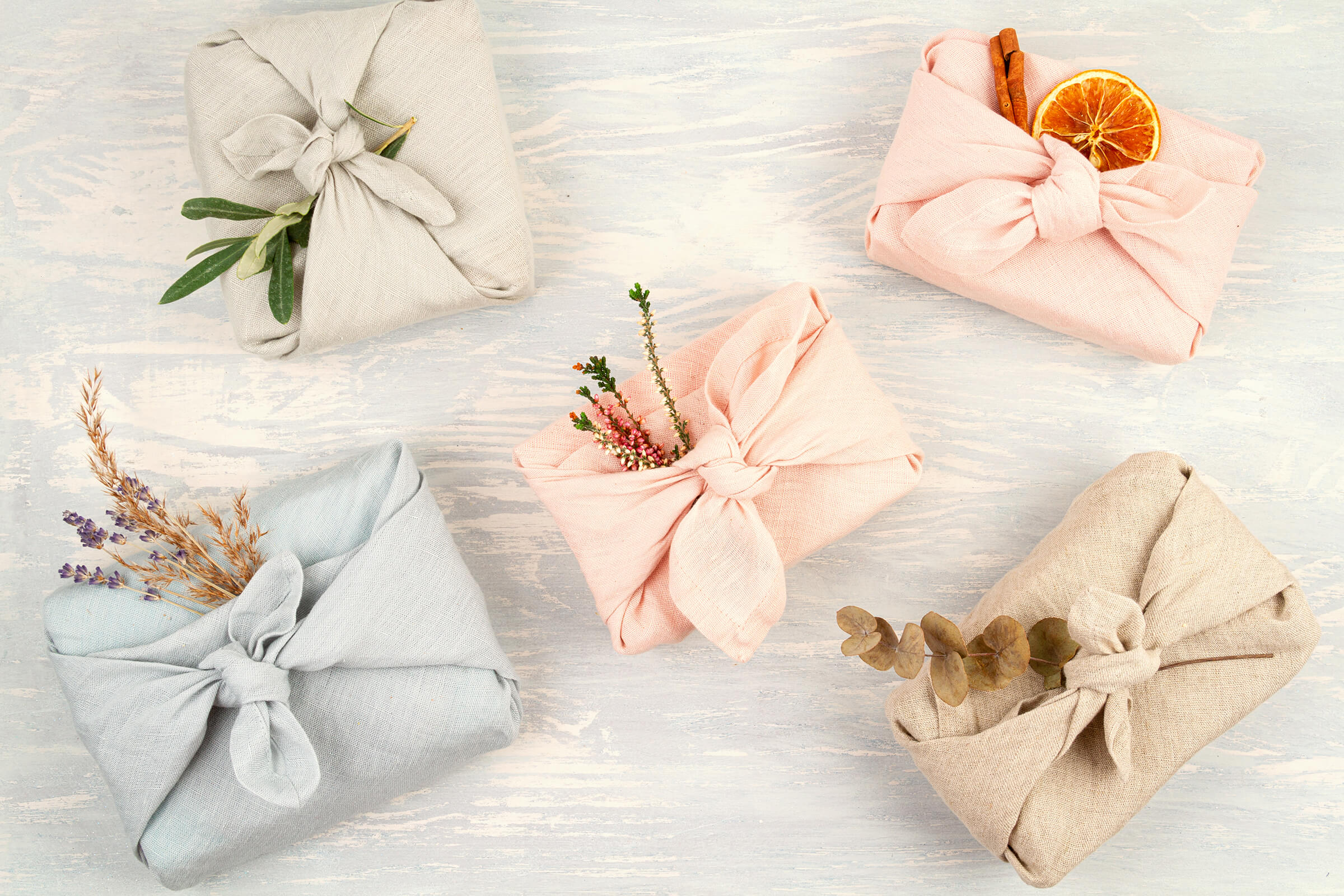
While glamming up presents in glittery and shiny paper feels luxurious, the true purpose of gifting ultimately lies in the sincerity towards your friends and family, letting them know how much you care for them. Even gifts wrapped in newspaper, or other eco-friendly materials will still surely be cherished by your loved ones, as long as they are gifts from the heart.
As the jolly season approaches, let us take the time to care not only for each other, but also for our planet and environment. If we can all take a moment to think about implementing more sustainable practices into our festive activities, we can gift ourselves the present of a cleaner, healthier environment and be #JollyTogether with the planet.
References:
- [1] NEA. (2019), Waste Statistics and Overall Recycling
https://www.nea.gov.sg/our-services/waste-management/waste-statistics-and-overall-recycling - [2] Green is the New Black. (2020, 17 Nov), 8 Conscious Crafting Tips and Tricks for the Holidays!
https://greenisthenewblack.com/sustainable-gift-wrapping-and-conscious-crafting-ideas-for-christmas/ - [3] Hongmei. What is Kraft Paper?
https://www.hongmei.com.sg/products/kraft-paper-supplies-singapore/
Image Credits: Nylon Coffee Roasters
Source: The Sustainability Project
Our guide to taking the entire family on a green virtual vacation
- Home
- Residential
- Blog
- Archive by Category "Knowledge" (
- Page 7 )
[Post Date]
Our guide to taking the entire family on a green virtual vacation

With the end of 2020 fast approaching, many of us may find ourselves out of our usual routine of planning for our long-awaited end-year vacations during this time of year. From finding the best flight ticket and accommodations deals, to marking down the city’s must-eats for a gastronomic experience, the thrill and excitement of a holiday is definitely missed.
But that does not mean that escaping into a different country is entirely impossible. Even though Singapore and Hong Kong have launched the air travel bubble, virtual travel has demonstrated to the world with new possibilities in deep diving into a new culture in any foreign cities. Not only does it reduce the amount of carbon footprints caused by air travel, it has also eased air pollution around the world[1]. So, what better time than now than to experience a technology that some experts have advised as an eco-friendly solution to the problem of overtourism?[2]
In view of everyone’s health and safety, curb the wanderlust fantasies and possibly bring the holiday experience right into your homes. We have put together a guide in creating that perfect virtual holiday for your family where not only is the act itself eco-friendly, but it gives you a chance to breathe second life into the items around the house. Once you are fully immersed in the entire experience, we guarantee a ball of a time of family fun!
1. Plan where to go
As with any holiday, a location is required. This time round, the world is your oyster and exorbitant plane tickets are the least of your concerns. You might have a destination already in mind, but if you are undecided, here are some off-beat options to explore from the usual favourites.

Immerse in South American history right up at Machu Picchu
A view like no other, experience the mystical place of Machu Picchu. Nestled in the Andes Mountains, the symbol of the Incan Empire is more than 7,000 feet above sea level and a sight to behold. Take a virtual tour of this UNESCO World Heritage Site from the comfort of your home as you discover Incan history without the altitude sickness.
Discover the Pharaoh’s tomb at the heart of the Great Pyramid of Giza
Transport yourself back in time to Ancient Egypt and be an archaeologist for a day as you dig deep into pyramids and tomb. Built over four and a half thousand years ago, the Great Pyramid of Giza is the tomb of the Pharaoh Khufu. Be awed by the science and precision of this historical masterpiece as you crawl through the secret chamber. The 360 virtual experience by BBC will take you pass through the walls into the very core of the Pyramid.
Journey through a South African safari in Kruger National Park
Get up close and personal with friends of the wild right in a world-renowned national park. Kruger National Park offers a full-blown safari into your home with their tours where you get a wildlife experience and to be able to observe lions, rhinos, tigers and bears up close. Safari vehicles head out into the wild twice a day for live safari tours where expert rangers take you onto the terrains of the national park to bring you a first-class experience.
*Catch the LIVE sunrise safari and sunset safari tours here at WildEarth at their respective timings
2. Set the stage
To really make it feel like you and your family are heading for a trip, consider getting everyone on board and decorating a part of the house to reflect the unique points of your selected destination.
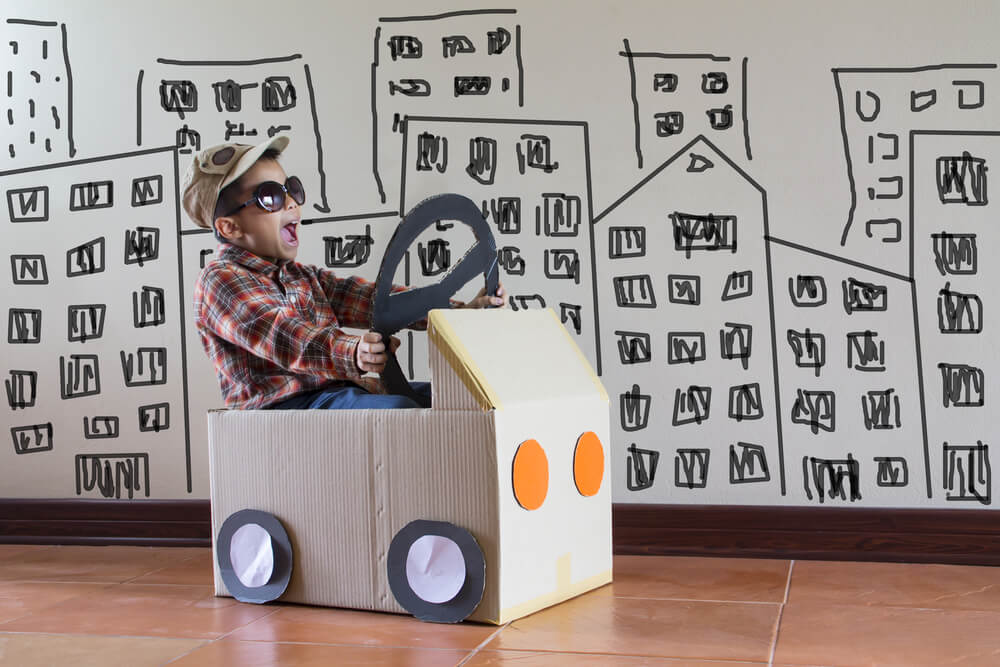
A fun way to engage the children to be a part of this project will be to have them craft the backdrop of your selected city. Make use of old cardboard boxes or unwanted materials around the house by turning into key landmarks of your location such as pyramids in Egypt of llamas in Peru. Gather items from around the house and challenge them to upcycle and create the perfect stage for your holiday
Alternatively, if creating a physical background might be too daunting, Snapchat and Instagram filters are a great way to transport everyone to your desired location. Make it a full photoshoot moment and have fun with posing from the comfort of your home while imagining you are at the peak of Mount Fuji or climbing the Great Wall.
3. Dress the part
Just because you are at home, does not mean you have to be in your pajamas for your entire ‘trip’. Bask in the full fun of travelling from home by dressing up and putting on your favourite vacation outfit. Don that safari hat or throw on your favourite hiking gear certainly livens up the mood and creates that nostalgic feeling of pre-flight jitters before going on a trip. Afterall if dressing up the part affects the way we feel, it may just help bring about vacation excitement!
4. Taste the local delights
Food is certainly one of the best parts of any holiday. It reflects the essence of any city and its culture and most often, one of the most unforgettable parts of any trip. This is certainly something you must not miss out on your virtual holiday!
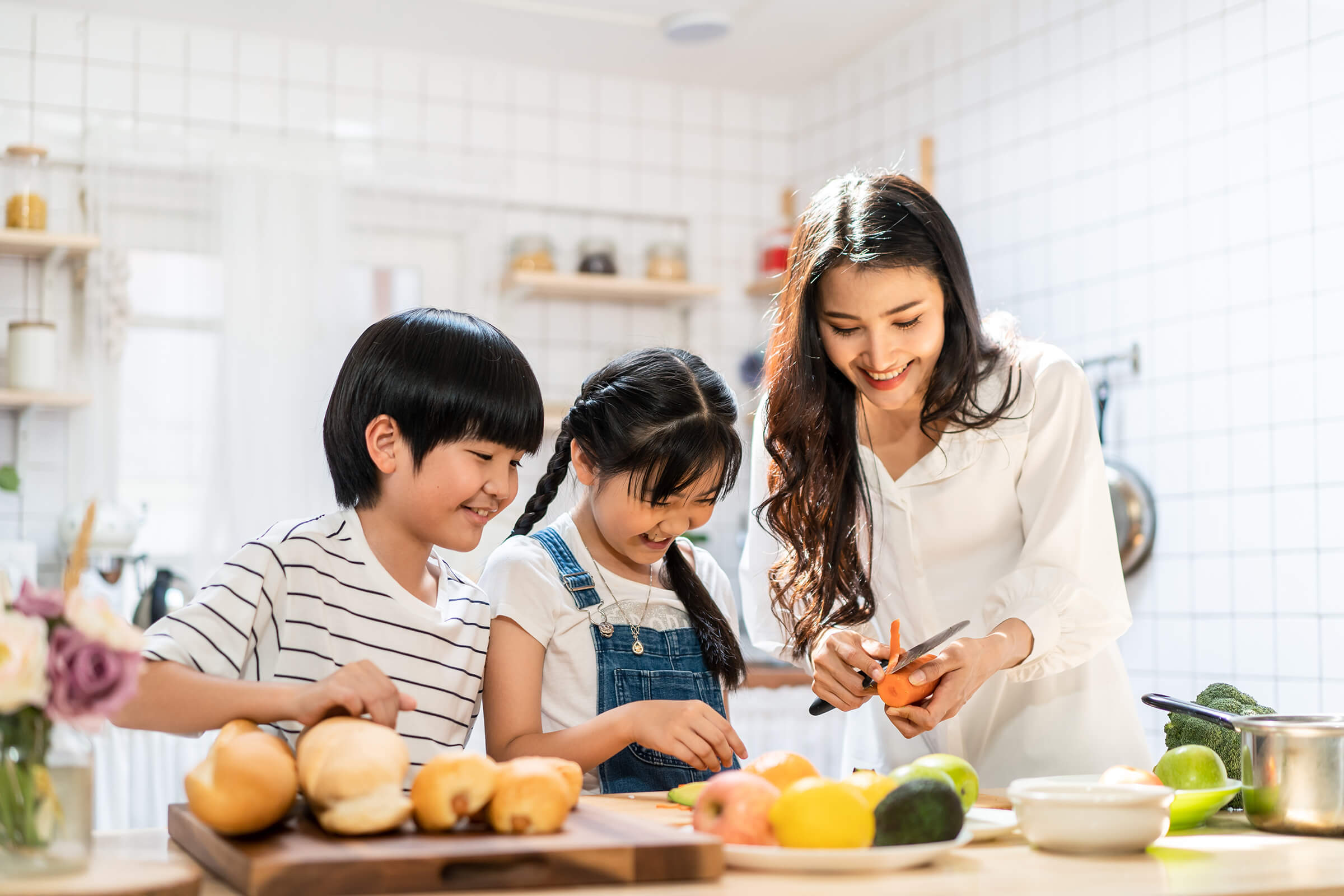
Avoiding using wrapping paper this jolly season does not just end at gift wrapping alternatives. Another way of giving without harming the environment is to consider presents that require no wrapping paper at all!
For instance, why not try your hand at baking or cooking this year? Cookies and pastries are great treats that everybody loves to indulge in regardless of the occasion, and we’re sure many would be touched by your homemade batch of brownies or cookies baked with love! Once you’ve done the work in the kitchen, simply pack the pastries in glass jars or Tupperware boxes, instead of disposable plastic boxes to store the food!
Alternatively, why not go for the gift of experiences instead of physical gifts? Take a family member or a friend out for their favourite meal or enjoy fun activities and have a nice catch up with them! This way, both you and your loved ones will be able to create fond memories and spend meaningful time together.
Wrapping Up

To spice things up, have a go at recreating some of the dishes from your destination’s local cuisine. There are plenty of online recipes that can give you a taste of your selected city. If your heart is in Paris, some pastries and croissant from your local bakery will do the trick. If Thailand is your location of choice, make full use of the local produce and whip up some Basil Chicken with rice. One of Geneco’s ChangeMaker Comcrop has locally grown basil that adds the flavour that is just needed in the dish.
Ultimately, food is a great way to complete the full virtual holiday experience while transporting your tastebuds to another part of this world.
While an end-year family vacation may be a dream for now, make no mistake in creating your own family fun from the comfort of your own home with this guide on having your own virtual holiday. It truly is the perfect green alternative for your family to have a get-a-way and take a peek at some of the destinations around the world. This way, you not only get to reduce on your carbon footprint, but to experience a whole new culture from the comfort of your home. With the advent of technology in modern times, we are sure this experience can only get better!
References:
- [1] Kommenda. N, Watts. J. (2020, March 23), Coronavirus pandemic leading to huge drop in air pollution,
https://www.theguardian.com/environment/2020/mar/23/coronavirus-pandemic-leading-to-huge-drop-in-air-pollution - [2] (2019, March 25), How Technology Can Help Us Tackle Overtourism,
https://www.cntraveler.com/story/how-technology-can-help-us-tackle-overtourism
Image Credits: Nylon Coffee Roasters
Source: The Sustainability Project
Going green with your home office
- Home
- Residential
- Blog
- Archive by Category "Knowledge" (
- Page 7 )
[Post Date]
Going green with your home office

Working from home may be a semi-permanent fixture for most of us now having stayed at home for a good majority of the year. Having a dedicated workstation is thus important since it can do wonders in ensuring we stay on track with our work while at home. A sustainable home office is a great example of how easy we can merge zero-waste and daily work together as we carve out that personal workspace. Not limited to just being beneficial to our health and well-being, it further ensures we are doing our part in advocating for a more sustainable lifestyle choice.
Here are some tips to help you in creating a sustainable green home office.
1. Cut off energy vampires
Your electronic devices such as your laptops, computers, and speakers, are using up energy even when not in use. When not turned off entirely or left to run on standby mode, these items are slowly draining energy in the background by responding to commands or performing updates even when not actively engaged by a user, and can suck up large amounts of electricity.
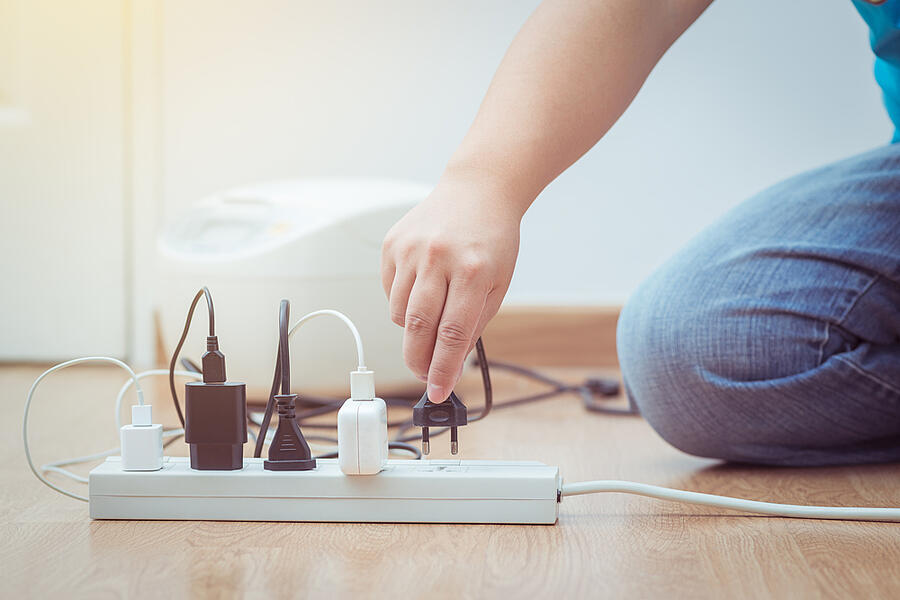
To prevent wasting your electricity usage, unplug your devices at the end of the workday. This way you not only do good for the earth but for your pocket as well.
2. Office plants
Bring the great outdoors inside! Another way to make your home office green is to fill your space with houseplants. They are easy on the eyes and a brilliant way to improve your air quality thanks to their ability to purify the air.
Some plants like orchids and succulents even continue emitting oxygen at night, making it safe to house them indoors[1]. Having indoor plants in your room can even help to reduce stress and create a peaceful environment, which can benefit your productivity and mental well-being as well.
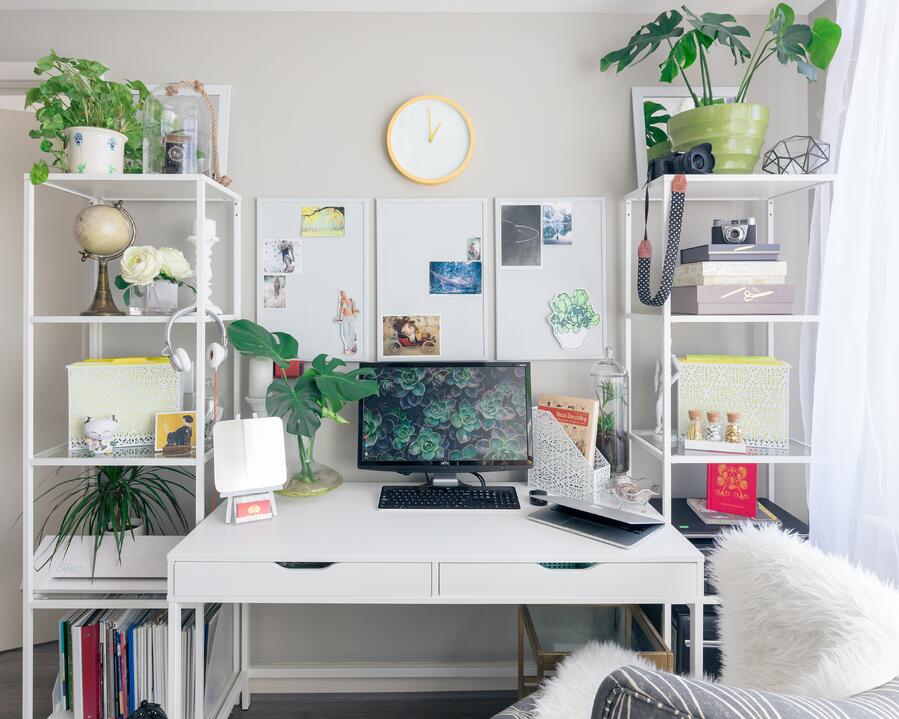
Worried that you may not have any green fingers? There are plenty of low maintenance plants that require little care which are perfect for beginners or people with busy schedules. Some of them include the English Ivy, Snake Plant or even our local favourite, the Money Plant.
3. Go digital
A total of 1,011,000 tonnes of paper waste was disposed by Singaporeans in 2019[2]. This is the third largest amount of waste generated among the various types of waste generated in the country.
With the advent of technology, keeping things digital and going green in the office has become accessible and easy. Use your electronic devices for most of your transactions like online billing, invoicing and payments. It can also be as easy as filing work documents digitally on electronics instead of having physical folders, or reviewing them on-screen rather than printing out. If you must use paper in the office, consider if it is possible to reuse misprints to reduce the need for a fresh sheet.

One of the ways Geneco is doing their part for environment is to only issue e-bills and have gone paperless since its inception. This helps reduce the unnecessary carbon footprint incurred from paper bills and postage mailing. A small move to phase out physical bills is a huge step towards a better world. We even have a guide to help you understand your Geneco e-bills to ensure a hassle free process!
4. Skip single-use stationery
Whenever you run out of pen ink or are looking for stapler refills, the first thought will usually be to head for the supplies closet to retrieve a new batch of stationery. Instead of being dependent on these disposable office supplies, choose to reuse and opt for sustainable options.
Choose refillable pens or staple-less staplers to reduce your consumption and the amount of waste generated. You will be even surprised to know that there are plantable pencils in the market that are designed to be planted once they are of unusable length. To complete building your own eco-friendly home office, you could even try to adopt a plastic-free routine as you go about your daily tasks.
5. Make the most of natural light
Selecting a workspace that has a window to allow natural light in is a great way to go green in your home office as well. This way, you save on your energy consumption by minimising the use of unnecessary lighting and get to enjoy the health benefits of Vitamin D which can improve your quality of sleep and productivity levels.

When optimum use of natural lighting is not possible, ensure your workplace is well lit by opting for an energy-efficient LED desk lamp. Not only do they not strain your eyes, they also consume 80 per cent less electricity and have longer lifespan than halogen bulbs[3].
Going green has never been easier, especially at work. It is a great way to keep individuals happy, healthy, and productive at the same time. Transform your home office into a green one today or challenge your colleagues to adopt sustainable practices for their own home office. You could even take it a step further to going green for your home by checking out Geneco’s Get It Green plan! At only 17.45cts/kWh, reducing your carbon footprint is both simple and affordable!
Share your ideas with one another on how to maintain a green office at home and power the change together!
References:
- [1] (2018) Orchid Republic. Do Succulents Produce Oxygen?
https://orchidrepublic.com/blogs/news/do-succulents-produce-oxygen - [2] (2019) National Environment Agency. Waste Statistics and Overall Recycling
https://www.nea.gov.sg/our-services/waste-management/waste-statistics-and-overall-recycling - [3] Ng, H.W. (2018, October 27) The Straits Times. More efficient lamps to light up go-green efforts
https://www.straitstimes.com/singapore/more-efficient-lamps-to-light-up-go-green-efforts
Image Credits: Nylon Coffee Roasters
Source: The Sustainability Project
What is the true cost of e-commerce shopping on the environment?
- Home
- Residential
- Blog
- Archive by Category "Knowledge" (
- Page 7 )
[Post Date]
What is the true cost of e-commerce shopping on the environment?
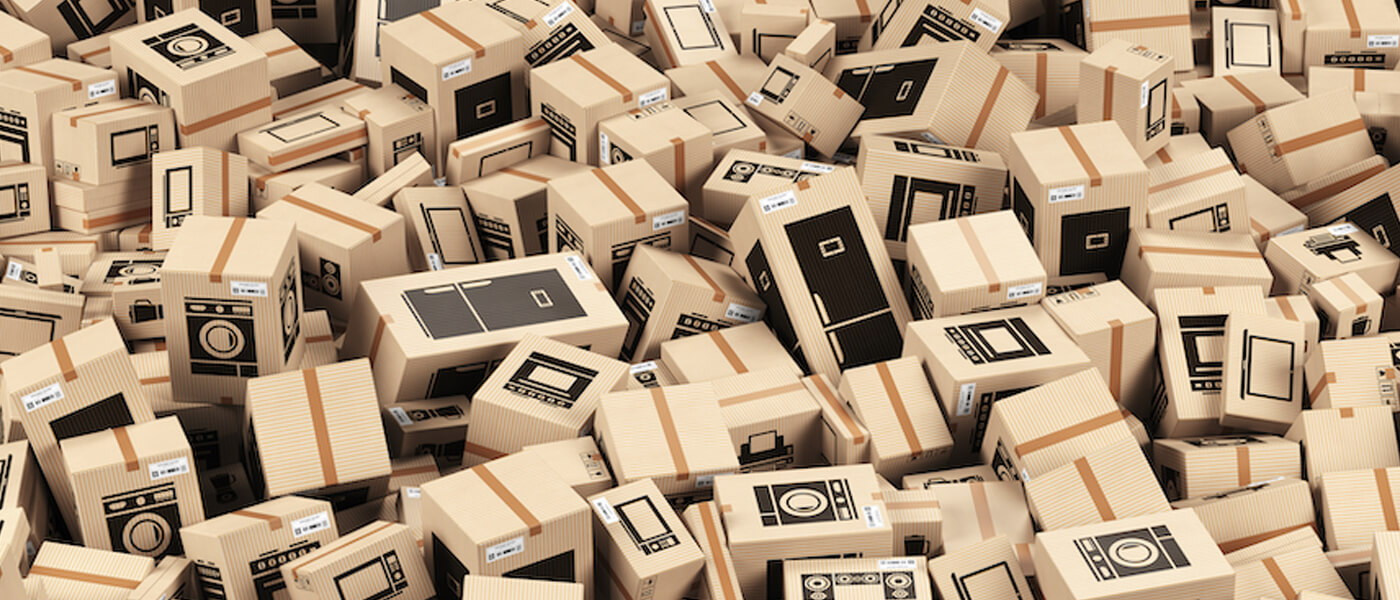
With the recent series of online shopping events, such as the 9.9 and 10.10 sales, as well as the upcoming 11.11 Singles Day sales, the popularity of retail e-commerce activity is becoming increasingly widespread every day.
In Singapore, online retail sales takings in January 2019 stood at over $201 million[1], and is expected to double by 2022 from 2017 figures, according to CIMB’s Research. Southeast Asia’s e-commerce market was worth $31.5 billion in 2018 and is projected to hit $138.5 billion by 2025.
Added on with the COVID-19 preventive measures, the number of online purchases made by Singaporeans have also increased dramatically over the past few months.
However, is this good in terms of sustainability and environmental conservation? Let us weigh the benefits and environmental impact of physical and online retail.
The Good
The good news for shoppers who prefer e-commerce options is that they generally produce less greenhouse gases and emissions than those who travel physically to the store to browse and purchase their goods – yielding a carbon footprint about 50% lower than that of the traditional shopper.
According to research, about 3.1kg of CO2 is yielded per customer journey whereby the travelling to the stores itself accounts for about 75%[2] of greenhouse emissions in the entire shopping process via the various modes of transportation, while the remaining emissions come from packaging, overheads of displaying the goods and running the store, and returning items.
The Bad
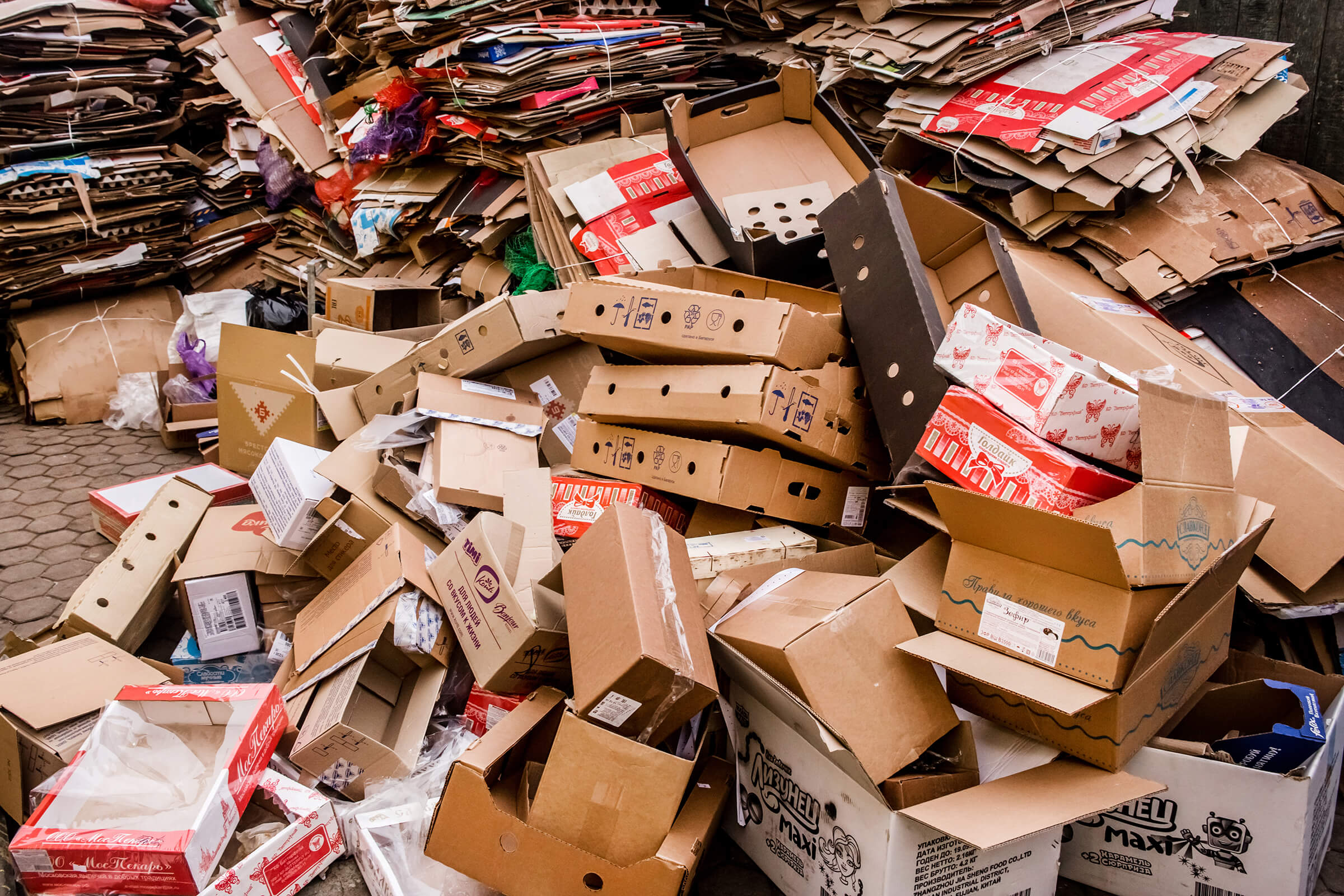
However, even without travelling physically, there are still many factors that can contribute to increased greenhouse gas emissions and carbon footprint produced by e-commerce activities.
The most common and serious form of waste from e-commerce comes from the packaging involved in the entire process. Anyone who has received a parcel from an online purchase will likely attest that their products are usually packed in an excessive mix of cardboard and plastic used to minimise damages. The amount of cardboard used for the 165 billion[3] packages shipped in the US yearly accounts for more than a billion trees alone, almost equivalent to 350,000 hectares of land, which is about five times the size of Singapore.
Another major source of waste and carbon emissions stems from the process of returning or exchanging products purchased online. This process is usually free, and customers have taken advantage of it – with the return rates of e-commerce products spiking by 95%[4] over the last five years. By having the product shipped back to the supplier, replaced, repackaged, and then re-shipped back to the customer, the entire process produces up to 2 to 3 times more emissions than it would for a single journey. Returns in the US alone accounts to more than 2 billion kilograms of landfill waste and 15 million tonnes of carbon emissions every year.
So what can you do?
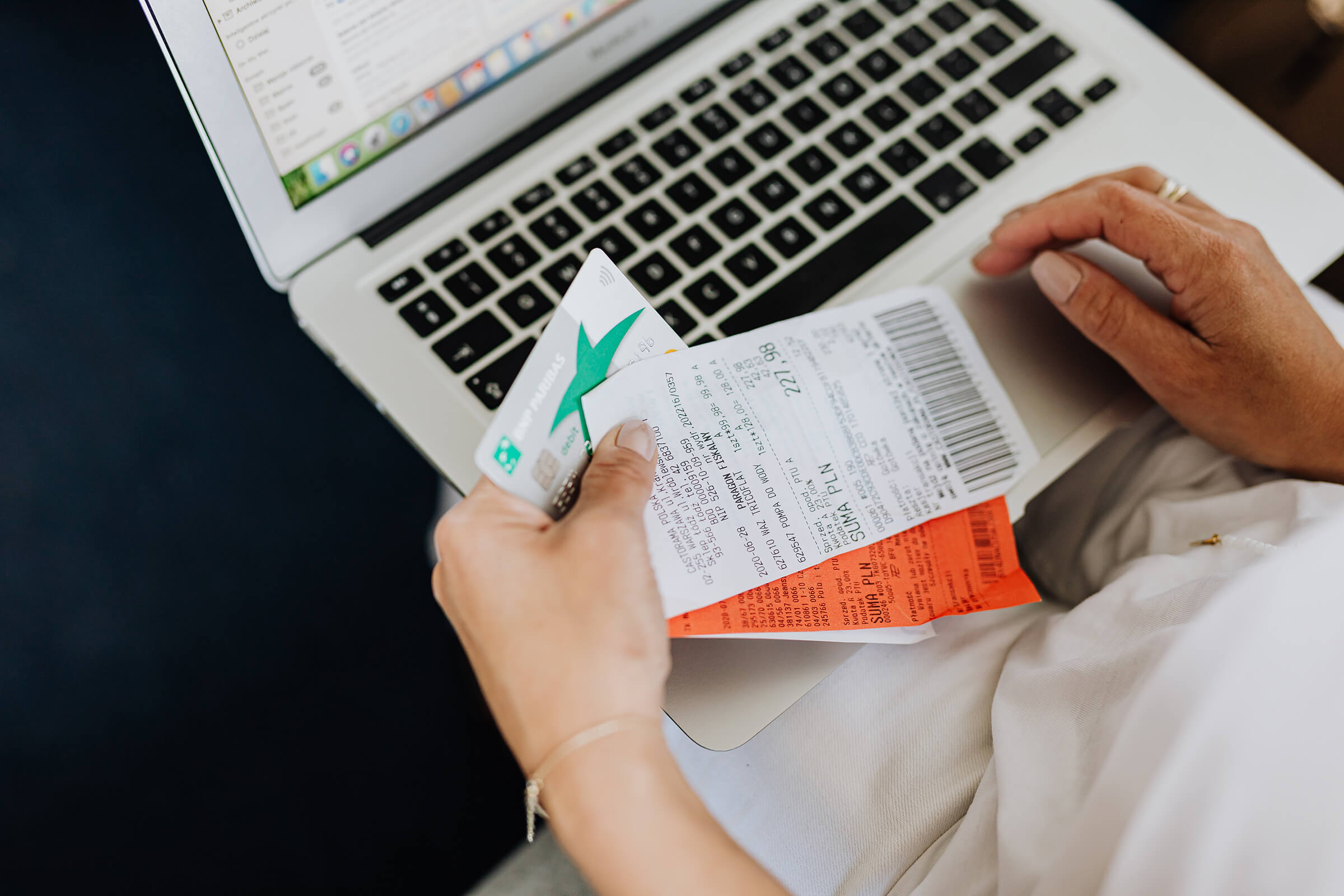
Despite the many ways for e-commerce to create a massive carbon footprint and waste, there are also plenty of sustainable habits we can practice for our online activities:
1. Don’t buy on impulse
Take your time to consider the item you’re purchasing and eliminate any potential chance to return your product. Check out the reviews or do your research to help your purchase decision. By ensuring that your product makes only one trip to your home, you’ll be reducing the carbon footprint of your purchase, contributing to a more sustainable environment.
2. Avoid Express Shipping
Avoid the “express delivery” option for your purchases. Doing so will allow companies to consolidate more orders and their products together into one shipment instead of multiple shipments for single items, hence driving efficiency and reducing emissions.
3. Choosing to go green
Consider retailers and services that provide the possibility for a greener e-commerce journey. For instance, there are several brands that have made the swap from poly mailer bags to biodegradable ones, making use of 100% recyclable paper bags in a bid to reduce its carbon footprint without compromising on customer experience. Alternatively, you can support local initiative such as Package Pals, which collects single-use packaging from Singaporeans either via collection or by mail before redistributing them to retailers for re-use.
A collective effort
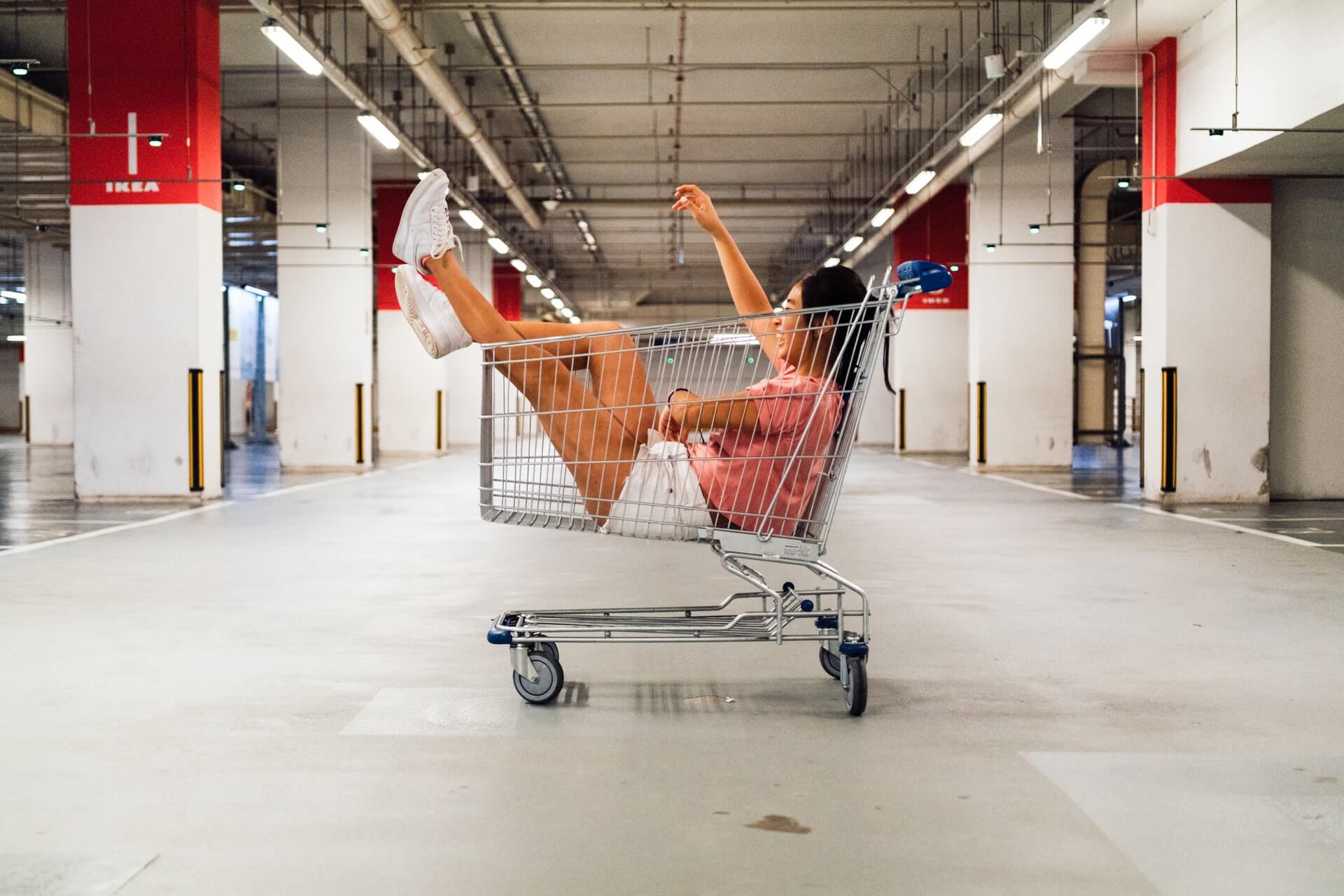
While we embrace the convenience of e-commerce as they become the more prevalent method of shopping, there are plenty of resources and initiatives available online helping us to make this process a sustainable one, as it should be and was meant to be.
With a little effort, we have everything we need to change the landscape of retail and consumerism, so what’s stopping you from becoming a greener shopper?
References:
- [1] Chong, D (2019, April 19) War on Waste: The dirty (brown) secret about e-commerce
https://graphics.straitstimes.com/STI/STIMEDIA/Interactives/2019/04/earth-day-online-shopping-packaging-waste-fails/index.html - [2] Jiang, E (2016, November 23) Is E-Commerce Really Better For the Environment Than Traditional Retail?
https://www.businessoffashion.com/articles/intelligence/is-e-commerce-really-better-for-the-environment - [3] Chong, D (2019, April 19) War on Waste: The dirty (brown) secret about e-commerce
https://graphics.straitstimes.com/STI/STIMEDIA/Interactives/2019/04/earth-day-online-shopping-packaging-waste-fails/index.html - [4] Schiffer, J (2019, July 30) The unsustainable cost of free returns
https://www.voguebusiness.com/consumers/returns-rising-costs-retail-environmental
Image Credits: Nylon Coffee Roasters
Source: The Sustainability Project
